

FIG PUBLICATION NO. 48Rapid Urbanization and Mega Cities:
|
 |
|
|
| This publication as a .pdf-file (91 pages - 2.818 MB) |
Acknowledgements
Authors
Contributors
Executive Summary
Background to Study
Urbanisation
Problems to be Managed Within Megacities
City Governance
Spatial Information to Manage Megacities
Spatial Data Infrastructures (SDI)
for Megacities
Innovative Uses of Spatial Information Tools to
Manage Megacities
Spatial Information Policy
Constraints
1. Introduction
1.1 Rapid Urbanisation
1.2 The Rise of Megacities
1.3 Problems Identified in Megacities
1.4 The Need for Developing New Spatial Tools
2. Technical Innovation in Management of Spatial
Data
2.1 Current Approaches to Urban Spatial Information Management
2.2 Data Collection Technologies
2.2.1 Photogrammetry
2.2.2 Field Surveying
2.2.3 Cartographic Digitisation and
Scanning
2.2.4 Radar Based Systems
2.2.5 LiDAR
2.3 Data Integration, Processing and Analysis
2.3.1 Data Integration
2.3.2 3D DTM/raster Data Integration
2.3.3 Constructing a Seamless Geospatial
Database
2.3.4 3D City Modelling
2.4 Change Detection
2.4.1 Change Detection Attributes
2.4.2 Change Detection Strategies
2.5 Urban Sensing
2.5.1 Ubiquitous Sensors
2.5.2 Citizen Initiated Sensors
2.5.3 Direct Citizen Contributions
2.5.4 Application in Megacities
3. Spatial Data Infrastructure
3.1 What is SDI?
3.2 Current Use of Spatial Information in Megacity Management
3.3 SDI in the World’s Largest Cities
3.3.1 SDI Application in the African Region
3.3.2 SDI Application in the
Asia-Pacific Region
3.3.3 SDI Application in the European
Region
3.3.4 SDI Application in the
Pan-American Region
3.4 Current Use of Spatial Information in City Administrations
3.5 Empowerment of Citizens Through SDI
4. Added Value of SDI for City Administration
4.1 Solving Problems
4.2 Integrative Effect of SDI
5. Potential Strategies
5.1 Key Tools Needed to Address Problems
5.2 Most Immediate SDI Needs
5.3 City Strategy of Greater Paris, France
Today there is an ever-increasing demand for the collection, integration, management and sharing of reliable spatial information, and the relevant education, experience sharing and development of best practices. This growing demand is driven by some of the most important changes in society which in turn are magnified by rapid urbanisation and the conditions of the world’s megacities. It is the purpose of FIG and its Commission 3 to assist the profession in all aspects of spatial data management in respond to these challenges and in support of society everywhere.
During the 2007–2010 term of office FIG Commission 3 has addressed the phenomenon of rapid urbanization and its impacts. Its particular focus has been on identifying spatial tools and general principles, norms and standards for good governance using reliable and accessible spatial information and providing guidance to interested countries to successfully address the problem of rapid urbanization. A central theme has been the formal access to land, property and housing for all. Further research will focus on climate change and disaster prevention and response, and other security issues that emerge due to rapid urbanization and accelerated development.
In this effort FIG Commission 3 has developed valuable synergies to adopt a multisector approach bringing together those people with relevant expertise including academics, state administrators, decision-makers and the private sector in the sharing of experience and knowledge. FIG Commission 3 has cooperated closely with agencies of the United Nations (UN-ECE, WPLA, UN-HABITAT and GLTN), the World Bank, ISPRS and other sister associations.
FIG Commission 3 aims to contribute to building knowledge and raising awareness in improving the quality of governance in large urban areas through the necessary reforms and the use of spatial data infrastructures. This publication is a further contribution of FIG and FIG Commission 3 in this field. The recommendations listed in the end of the publication should help government, decision makers and professionals to deal with the major challenges of rapid urbanisation.
FIG would like to thank the members of the expert group and all the specialists who have contributed to this publication for their constructive and helpful work.
| Prof. Stig Enemark FIG President |
Dr. Chryssy Potsiou FIG President Chair of FIG Commission 3 |
The following experts and institutions are acknowledged for their valuable contributions to this study:
*Authors’ names are listed in alphabetical order
Special thanks go to the correspondents in the seven megacities used as case studies, to Prof Rahmi Nurhan CELIK, Istanbul Technical University, and Anthony ADEOYE, Lagos city administrator for their contribution in data collection and to Gerasimos APOSTOLATOS, FIG Com3 vice chair of Administration. The support of all FIG Commission 3 delegates who have participated and prepared coordinated research papers in the three annual workshops is gratefully acknowledged.
We also thank the Technical Chamber of Greece for its continous four-year support of FIG Commission 3 relevant activities and for hosting the annual 2007 Comission 3 Workshop; the Spanish Association of Surveyors and DVW German Association of Geodesy, Geoinformation and Land Management for hosting the annual Commission 3 workshops; and the French Order of Surveyors for hosting the final expert group meeting in Paris.
Special thanks to Prof Stig ENEMARK, President of FIG, for providing strategic guidance in identifying urbanisation as a key global issue in supporting the Millennium Development Goals.
Disclaimer
Note that the following report is based partly upon data received from questionnaires and interviews involving individual people in city administrations. Therefore, the data reported here may not represent the broader view of other stakeholders and cannot be seen as an official statement of fact from any city administration. The data is further subject to interpretation by the authors and, while based on the data provided by correspondents, any views expressed within this report are those of the authors of this report.
The International Federation of Surveyors (FIG) is an international, non-government organisation whose purpose is to support international collaboration for the progress of surveying in all fields and applications. FIG Commission 3 (Spatial Information Management) has undertaken a research study about trends in the use of spatial information and technology in supporting the management of eight of the world’s largest cities.
The research has included:
Urbanisation is a major change taking place globally. The urban global tipping point was reached in 2007 when for the first time in history over half of the world’s population 3.3 billion people were living in urban areas. It is estimated that a further 500 million people will be urbanised in the next five years and projections indicate that 60% of the world’s population will be urbanised by 2030.
This rush to the cities, caused in part by the attraction of opportunities for wealth generation and economic development, has created the phenomenon of ’megacities’: urban areas with a population of 10 million or more. There are currently 19 megacities in the world and there are expected to be 27 by 2020. Over half of this growth will be in Asia where the world’s economic geography is now shifting.
This incredibly rapid growth of megacities causes severe ecological, economical and social problems. It is increasingly difficult to manage this growth in a sustainable way. It is recognised that over 70% of the growth currently takes place outside the formal planning process and that 30% of urban populations in developing countries are living in slums or informal settlements, i.e. where vacant state-owned or private land is occupied illegally and is used for illegal slum housing. In sub-Saharan Africa, 90% of new urban settlements are taking the form of slums. These are especially vulnerable to climate change impacts as they are usually built on hazardous sites in high-risk locations. Even in developed countries unplanned or informal urban development is a major issue.
Urbanisation is also contributing significantly to climate change. The 20 largest cities consume 80% of the world’s energy and urban areas generate 80% of greenhouse gas emissions worldwide. Cities are where climate change measures will either succeed or fail.
Rapid urbanisation is presenting the greatest test for land professionals in the application of land governance to support and achieve the Millennium Development Goals (MDGs). The challenge is to deal with the social, economic and environment consequences of this development through more effective and comprehensive land administration functions, supported by effective Spatial Data Infrastructures, resolving issues such as climate change, insecurity, energy scarcity, environmental pollution, infrastructure chaos and extreme poverty.
Administrations in large cities are often confronted with a multitude of key problems, like high urban densities, transport, traffic congestion, energy inadequacy, unplanned development and lack of basic services, illegal construction both within the city and in the periphery, informal real estate markets, creation of slums, poor natural hazards management in overpopulated areas, crime, water, soil and air pollution leading to environmental degradation, climate change and poor governance arrangements.
The inevitability of further population growth is a common issue. Some cities reported that their administrations have little control over population growth; it was a regional or national issue and must be addressed at that level. However, monitoring population change effectively and being able to respond through planning and infrastructure development will be major challenges.
Informal settlements are a problem in many cities. An increasing number of citizens do not have either permanent or temporary access to land and adequate shelter. This exclusion is caused, in many cases, by structural social inequalities, inheritance constraints, conflicts, non pro-poor or pro-gender land policies and land administration systems that are ineffective and expensive for the end user. Without a range of appropriate interventions being applied within the broader context of economic growth and poverty reduction policies, social exclusion and poverty will continue to spiral out of control; already 90% of new settlements in sub-Sahara Africa are slums.
Natural hazards and emergency management are major issues in most cities. Risk profiles from floods, fires, earthquakes and other hazards differ among cities, but capacity to plan, prepare, respond and recover from disasters is a common need.
Many cities appear to have problems with unclear and overlapping responsibilities amongst internal and external agencies, leading to operational dysfunction such as a multitude of agencies holding non-accessible spatial information. For example, Sao Paulo comprises component cities all with their own governance arrangements. It is clear that solutions to problems facing megacities require concerted response from many internal units and regional and national agencies in areas such as planning, infrastructure, development and land use controls, transportation, environmental management and water management. Mandates might be clear, but rationalisation of functions and more effective levels of cooperation and information sharing are needed.
Even if city planning is centrally coordinated, city administrations often have little control over the implementation (i.e. land use and building controls) of their policiesand plans. For example, in France the greater Paris region, Île de France, has a regional planning authority that sets planning policies for the highly decentralised 1,280 communes. Political differences create tensions in the consistent implementation of these planning policies.
The influence of megacities reaches well outside their administrative boundaries to the peri-urban and regions beyond. It is essential that the greater region be managed holistically to maximise the economic benefits of the city. Regional planning places even greater emphasis on effective governance of the larger region, even across international boundaries, with cooperation in planning, development control and sharing information being essential.
In many cases, infrastructure providers are not a direct part of the city administration’s planning and development process, some are private enterprises while others may be located at another level of government. This causes problems with the proactive planning and strengthening of utility services.
Most megacities support some level of civil society participation in the planning and design of their services, such as citizen involvement in the urban planning process. However, spatially enabled web based services are providing new opportunities to more closely involve citizens in consultations and land administration functions.
The rapid growth of megacities causes severe social, economical ecological and problems. How can this growth be nurtured in a sustainable way? The challenge for land professionals is to provide the megacity ‘managers’, both political and professional, with appropriate ‘actionable intelligence’ that is up-to-date, citywide and in a timely manner to support more proactive decision making that encourages more effective sustainable development.
Spatial information has become indispensable for numerous aspects of urban development, planning and management. The increasing importance of spatial information has been due to recent strides in spatial information capture (especially satellite remote sensing and positioning), management (utilising geographic information systems and database tools) and access (witness the growth in web mapping services), as well as the development of analytical techniques such as high resolution mapping of urban environments. These more efficient techniques can lead to a wider diversity of information that is more up-to-date.
In some circumstances, a wealth of existing map, image and measurement data can already be found in areas such as land administration, natural resource management, marine administration, transportation, defence, communications, utility services and statistical collections. The challenge is for users both within and outside these areas of activity to break down the information silos and to discover, to access and to use the shared information to improve decision-making, business outcomes and customer services.
The study has found that spatial information technology is being recognised widely as one of the tools needed to understand and address the big urban problems, but there is still a general lack of knowledge amongst communities of practice about what spatial solutions exist and how they can used and prioritised.
Information to support the management of cities is traditionally channelled and aggregated up the vertical information highway from a local, operational level to a policy level. In developed countries, urban growth and its characteristics can normally be measured through information derived from the land administration functions. However, in the megacities of the developing countries, informal settlements are the norm, growth is rampant and administrative structures are limited. The traditional source of change information is not readily available there.
The concept of using SDI to more efficiently manage, access and use spatial information across megacities is evolving and megacities are at different stages of their implementation. The EC INSPIRE Directive has provided welcome impetus across Europe and beyond. However, most cities have no strategic framework to guide and create their SDI. This reflects the difficulty of the task to create an SDI within megacities that are organisationally complex and involve a large number of stakeholders with diverse sets of spatial information; a microcosm of the national problem.
City administrations have different interpretations of what constitutes an SDI, but most reported that they had at least some elements of an SDI already in place. Cities like Paris and New York have a more mature and comprehensive implementation of a megacity SDI, managed by dedicated resources. However, most cities reported that they had only small “central GIS units”, under-resourced and generally incapable of providing a comprehensive citywide SDI. Missing capabilities included no spatial data policies and standards, common metadata, formal data sharing arrangements between units or agencies, or shared data access mechanisms. It could be many years before mature and fully populated SDI emerge in megacities. However, it is important for megacities, especially in developing countries, to develop SDI capabilities in areas that will deliver the most benefits to their current pressing needs.
Most do not have a formal “spatial information strategy” across the whole administration. However, most countries covered by this project have national (and in some cases regional) SDI strategies. At this stage it is not clear what connection there is between national and local strategies or how national strategies will meet the needs of cities.
Some cities, for example New York, have developed an intranet that could be used to access spatial data held across multiple units. Other cities, such as Buenos Aires, have invested in providing access to spatial data as part of their public websites, reporting information about aspects of city administration such as land tenure, use, planning, environmental and disaster management information. Approaches like these should be used as exemplars by other cities.
Although Norway does not have megacities, the Norwegian SDI provides a model for an application of spatial data infrastructure in a democratic society enabling citizen participation in policy and decision-making for city management.
New tools, techniques and policies are required to baseline and integrate the social, economic and environmental factors associated with megacities, to monitor growth and change across the megacity and to forecast areas of risk – all within shorter timeframes than previously accepted. Moreover, they must be flexible enough to meet traditional needs such as land development, tenure and value applications, but be designed to be interoperable and integrate within the city wide SDI as it evolves. Access to integrated spatial information from the SDI will lead to more joined-up, proactive decision making allowing the prioritising of scarce resources to tackle the most sensitive and risk prone areas within a megacity.
These tools must support the operation of land administration functions, but should also support the management of key problems such as disaster management, flooding control, environmental management, health and transportation, for example, but also encourage economic development and reduce social inequalities.
These spatial information tools include:
Advances in developing megacity SDI will only occur when senior management are convinced of the benefits through experience derived from business case studies and only when SDI implementation is guided by a supportive megacity information strategy. However, it is difficult to achieve this type of strategy in the complex multi-layer governance structures of the megacities.
As spatial information is used more commonly with more citizen awareness, there is a risk of popular mistrust concerning privacy issues. It is therefore essential that policy frameworks are established legally for the appropriate use of spatial information. It is also important to raise public awareness about the benefits citizens will enjoy through SDI, mainly due to increased transparency in city governance; and the opportunity for public participation in decision-making.
It must be recognised that citizen participation in information gathering suggests certain risks like the concern for privacy; suspicion of governmental intrusion and loss of public support; the issue of quality of data collected by non professionals and the need for quality analysis; the danger of miss-use of citizen-provided information by repressive governments; and the question of the capacity of governmental agencies to monitor, evaluate, and interpret the volumes of data collected in certain urban sensing systems.
FIG Commission 3 (Spatial Information Management- SIM) is a permanent committee of FIG with a focus on:
The Commission 3 work plan for 2006–2010 focused on current trends in spatial information and technology to improve management of rapidly increasing urban areas.
The 2006–2010 accomplishments of FIG Commission 3 include, among others:
This current research study is responsive to the aims of the Commission 3 work plan and is a further contribution in this direction. It investigates the current trends in using spatial information in particular for the management of megacities, where needs are enlarged and urgent.
Location, in the form of spatial data, is a key enabler to visualise current situations, predict impacts and enhance service delivery. Information about location is a natural integrator, capable of enabling complex analysis of spatial distribution of places, events and services; providing opportunities to link up government services, interact with customers and optimise delivery options.
The value of spatial (location-referenced) data is growing in recognition
internationally. Many countries with developed economies now have policies and
strategies aimed at maximising the benefit from spatial data held by government
agencies in particular. A wealth of existing map, image and measurement data can
already be found in areas such as land administration, natural resource
management, marine administration, transportation, defence, communications,
utility services and statistical collections. The challenge is for users, both
within and outside these areas of activity, to discover, access, and use this
information to improve decision-making, business outcomes and
customer services.
As cities get larger spatial information is becoming a key resource in efficient delivery of e-government services, public safety, national security and asset management. In this study, it is proposed that a city-wide spatial data infrastructure linked to similar structures in other levels of government, can provide a sustainable solution to many problems of megacities. Despite all the progress made in spatial data collection, modelling and dissemination, it is important to look for ways and methods to improve e-government taking into account the needs of citizens.
The goal of this research is to investigate the emerging needs, the current trends and the extent of using SDIs in selected megacities, but also to identify the emerging possibilities for using new technical tools for the governance of sustainable large urban areas applied by the surveying- mapping- data processing community. The study aims to demonstrate these technical tools, not only to governmental policy makers, but also to planners, economists, scientists, environmentalists, sociologists and all others with an interest in the life of megacities.
However, it should be mentioned that each city should build its own spatial data infrastructure, and should choose its own tools appropriate to its own social, economic and cultural environment. The publication suggests alternative ways to meet the current requirements and makes general recommendations on best practice. It does not advocate the use of any specific tools because each country has a different history and experience.
The methodology followed for this study includes:
The 20th century is related to the phenomenon of rapid urbanisation. By 1900 13% of the world’s population was urban. During the next years, improvements in medicine and science allowed higher city densities. According to UN reports, the urban population increased from 220 million in 1900 to 732 million in 1950 (29% of the world’s population). By 2007 50% of the world population were living in cities (Figure 1); further improvements in technology, medicine and prevention of disease allowed even larger urban densities. According to latest predictions, 4.9 billion people, or 60% of the world’s population, are expected to be urban dwellers by 2030 (Table 1). Investigations show significant differences in urban population change between the more developed regions and the less developed regions. The majority of the inhabitants of the less developed regions still live in rural areas, but in the more developed regions the population is already highly urbanized. As urbanisation tends to rise and as development increases urbanisation is expected to rise as well in the future (Table 2). However, despite their lower levels of urbanisation, less developed regions have more than double the numbers of urban dwellers than the more developed (2.3 billion vs. 0.9 billion). By 1968, the urban population of the less developed regions surpassed for the first time that of the more developed regions and continues to do so thereafter. Furthermore, according to UN predictions, the rapid growth of the population of the less developed regions combined with the near stagnation of the population in the more developed regions implies that the gap in the number of urban dwellers between the two will continue to increase (Table 2).
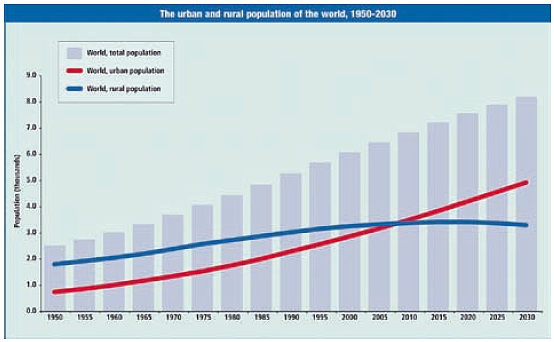
Figure 1: The urban and rural population of the world. (Source: UN
Population Division)

Table 1. Global proportion of the urban population increase. (Source: UN
Population Division)

Table 2. Differences in urban population rates. (Source: UN Population
Division)
As some cities developed through the centuries, they became known for their specific attributes. By example, in the classical era Delphi, Delos, Epidauros and later Rome, Jerusalem and Mecca became known as religious centres, Alexandria became known for its library, Constantinople as the capital of the Byzantine Empire, Damascus for the trade centre and Beijing for its administration. In modern days culture and markets have become more important factors; visitors, but also investors and large international corporations, are attracted by the largest cities worldwide for the museums, exhibitions, cultural events, fashion, theatres and art galleries. Cities are the centres of learning, innovation and sophistication. Already during the Byzantine era, Constantinople had a population of 500,000 citizens (6th–7th century AD) and was considered to be the second largest city after Baghdad. Today, the same city, Istanbul, has become a modern megacity of approximately 11 million citizens connecting Europe with Asia. It is obvious that the location and topography of the area, together with other major factors like economy have played a major role for the progress and advancement of several cities through centuries.
However, as cities expand beyond their administrative boundaries they lack the financial or jurisdictional capacity to provide the necessary services (planning, water, electricity, sanitation, etc) to all inhabitants. The administration of the city becomes more complicated and bureaucratic in the less developed countries, where land administration is weak and new technology and necessary spatial tools are not implemented.
In the following a few examples are given of the increased need for services provision in city management due to rapid urbanisation.
Energy insecurity (Figure 2b, 2c) has become a major global issue and the related pollution management is expensive. Energy inadequacy and illegal electricity connections are a common phenomenon in most countries of the world facing the problem of rapid urbanisation, also within Europe – especially within the Eastern European region. The Public Power Corporation’s (PPC) plant in Kozani, Greece has been found to be one of the most polluting in Europe. As reported, PPC will pay up to 2.2 billion Euros a year for carbon emission licenses unless it shifts away from its dependence on lignite. Consumers could expect a rise in electricity bills of 45% by 2013 (Figure 2a).
 Figure 2a: PPC plants, Greece. (Source: ANA-MPA photographer V. Varthoulakis) |
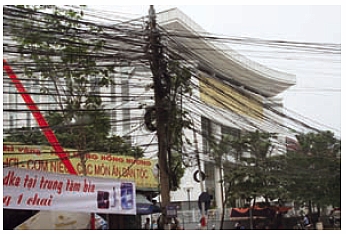 Figure 2b: Energy supply infrastructure, Hanoi. (Source: private collection C. Potsiou, 2009) |
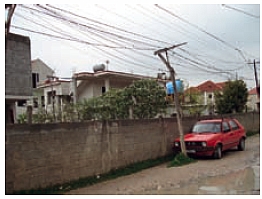 Figure 2c: Illegal connections in Albania. (Source: private collection D. Andoni) |
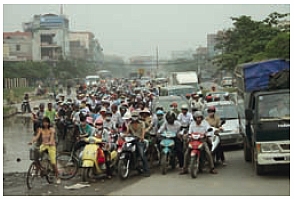 Figure 2d: Traffic in Hanoi, Vietnam. (Source: private collection C. Potsiou, 2009) |
Traffic management and transportation problems may be demonstrated statistically. In Mumbai (a city of 14–18 million citizens) 55.5% of the city’s population walk and 21.9% commute by train. Despite the fact that, Mumbai has a low level of car ownership (29 cars per 1,000 residents), as published in the press, more than 20,000 people have been killed on Mumbai’s notoriously overcrowded train system over the past five years, a minimum of 10 deaths daily on the railways. Statistics from Vietnam report a seriously increased number of deaths in traffic accidents. With one million vehicles and more than 18 million motor bikes on the roads, the country’s infrastructure development had failed to keep pace with increased transportation demand (Figure 2d).
Large congregations of people in relatively limited spaces threaten to exceed the natural supplies of potable water. Still, as large population centres use water for many vital purposes, disposal results in the form of sewage and wastewater in many forms providing the irony of supply shortage versus a disposal overburden. Fresh water is getting expensive. Most cities in the developing world discharge their sewage untreated into rivers (from where, as reported, they also draw their drinking water) or into the sea, together with farm chemicals and industrial effluents. For example, some years ago a large quantity of Delhi’s sewage was used for irrigating the agricultural lands. Today much of the agricultural land has been converted into residential centres.
Garbage management is a major issue in most cities. For example, six thousand tons of trash is produced daily in the metropolitan city of Athens (Figure 3). Until 2005 Greece was operating 1,102 open landfills. After a great effort, Greece has managed to close most of them (about 400 are still operating) and avoid the high EU penalties. The costs for the regeneration and mechanical recycling procedure are high though.

Figure 3: Open landfill (left); regeneration and preparation for
mechanical recycling (right).
The poor migrating in unanticipated numbers from rural areas to cities are the source of most of the world’s current informal urban expansion. Accelerated development, pro-poor or affordable housing needs and economies of scale often lead to high urban densities by tearing down the stock of old buildings, including buildings of architectural value built to a human scale that reflects local culture and history.
Affordable housing often means identical concrete constructions of more than 25 m height. For example, in order to achieve economies of scale in the modern city of Skopje (of only 571,040 citizens) this has recently become the minimum required height prescribed in the building regulations, while in the past planners were accustomed to work with maximum permitted height standards.
Safety standards are frequently overlooked for the sake of increased commercial development with terrible results. Such was the case in some modern constructions following a strong earthquake in L’Aquila of Italy in April 2009.
As reported by Prof Rangachari, of India, humanity has lived with floods for centuries but the impact of floods was not felt to the same extent in the past as is experienced now. Construction in stream and river floodplains or close to the coast, or in areas where extensive deforestation has taken place due to rapid urbanisation, presents greater risk of flooding and mud slides. The results are similar whether in India or in the favelas of Sao Paulo or in the unplanned settlements of Europe or in New Orleans or in Asia. Natural disasters, floods, earthquakes and fires are more difficult to deal with in highly urbanized areas and affect both rich and poor (Figure 4).
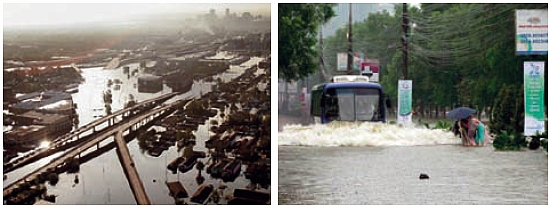
Figure 4: Floods in New Orleans (left). (Source:
http://blog.kir.com/archives/new%20orleans%20flood.jpg ); Hanoi (right).
(Source: Tuan and Duong, 2009)
Rapid population growth leads to increased need for affordable housing in most cities; the lack of certain policies leads to rapid informal development. Informal and unplanned development is actually caused by the phenomenon of rapid urbanisation. As reported in The Economist “the poor, who seem to prefer urban squalor to rural hopelessness, migrate to the city centres and urban fringe creating slums” (Figure 5).

Figure 5: Left: Informal settlement in Mexico City. (Source: private
collection A. Valenzuela). Right: Kibera informal settlement in Nairobi.
(Source: Stig Enemark. 2007)
According to UN statistics, one of every three of the world’s city residents lives in inadequate housing with few or no basic services. The world’s slum population is expected to reach 1.4 billion by 2020. Informal settlements, whether of good or bad construction quality have a common characteristic all over the world: they do not officially exist. For that reason government provides nothing, or very little in the best cases.
Slums in less developed areas, whether in Latin America (Figure 5 left), Africa (Figure 5 right), Asia (Figure 6 left), Ex-Soviet Asia or even in Europe (Figure 6 right) have a few similar characteristics: unclear land tenure, poor quality and size of construction, no or poor access to services and violation of land-use zoning. Crime that flourishes in crowded areas with insufficient job opportunity is also a common characteristic.

Figure 6: Left: Dharavi, Mumbai, India.
(Source:
http://news.bbc.co.uk/2/shared/spl/hi/world/06/dharavi_slum/html/dharavi_slum_intro.stm).
Right: Informal settlement in Albania. (Source: private collection D. Andoni)
Unfortunately in the slum situation changes are difficult and slow because, as often reported in The Economist, frequently both sides, the city administrations and the slum dwellers, may enjoy benefits in some cases:
Informal development is also caused by the spread of the low or middle-income population to the cities’ outskirts and the surrounding rural lands either by squatting on rural land (Figure 6 right) or by seeking affordable land to develop self-made housing. This causes an increase of informal real estate markets and loss of state revenue (by the loss of permit revenue and taxes), illegal changes in the spatial organisation of landuses and gradual environmental degradation. This sub-urban population commutes to the city centres every day consuming energy and increasing traffic and pollution problems.
The most important threat of rapid urbanisation may be global climate change. World greenhouse gas emissions, one of the major factors responsible for climate change, have increased 70% between 1970 and 2004 (Figure 7). Much of the increase is due to growth in the sectors of energy (+145%), transportation (+120%) and industry (+65%) and to the reduction of forest land and land use changes (40%). Many developing economies, in their effort to reduce government deficits apply flexible or poor environmental regulations for their productive units in order to achieve competitive advantages in production and attract international investment.
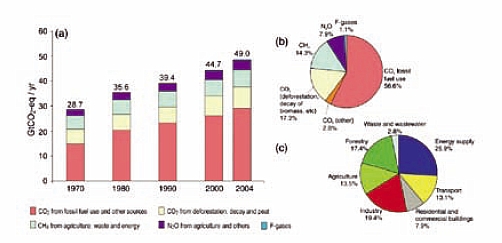
Figure 7: Increase of greenhouse gas emissions. (Source: Wilbanks et al,
2007)
Current development policies are directed at practices leading to climate change and much research is being carried out to provide more appropriate policy options for the sectors of energy supply, transportation, buildings, industry, agriculture, forestry and waste management.
However, urbanisation is considered as an indicator of development, generally related to industrialised and technologically advanced economies. The concentration of major economic activities in urban areas produces economies of scale and leads to various social and economic benefits like employment, better access to health and education services, trade and cultural activities. While it is a matter of human rights that people are free to choose where they will live, all must bear the costs of the natural resources they consume, knowing that their competitors do the same.
Legislation and regulation are on the agenda of authorities in most countries. Such legislation cannot always be efficiently applied and relevant services cannot be appropriately planned without the necessary tools for provision and dissemination of relevant reliable up-to-date spatial information. Markets cannot function efficiently without reliable systems to secure land tenure and zoning and planning systems to define the regulations concerning private rights for the use of land and natural resources. There is great activity in most countries around the world to implement spatial data infrastructures. In some developed countries, spatial information infrastructure is provided by cadastral, planning and land development permitting authorities. This is a fundamental tool for sound decision-making, providing for the management of land in a holistic way. It is a matter of good governance to achieve sustainable urban growth, but this brings new challenges for land surveyors, planners, and governments.
Urbanisation is an irreversible process. The 20th century has seen the emergence of megacities (cities with population greater than 10 million). Such large population concentration in cities is a significant historic change. The number of megacities has risen from two in 1950 to twenty in 2005. Moreover, 17 out of the 20 megacities in the world are located in the world’s less developed regions (Figure 8).
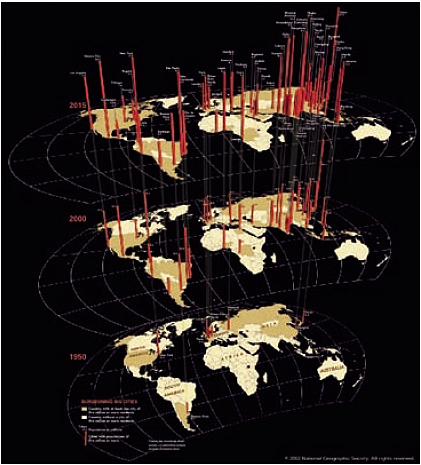
Figure 8: Growth of megacities and prediction for 2015. (Source: National
Geographic)
Ancient Megalopolis, built by Epaminondas in 371–368 B.C., was the capital of the Arcadian alliance in Greece. It was considered to be the model of a prosperous, happy and peaceful city. Most current megacities (that share the same “name” with the ancient city) but also metropolitan cities (cities up to 5 million) do not experience a similar quality of life, since global population growth is becoming an urban phenomenon mainly in the less developed regions. It is ironic that much of what were once considered the major advantages of life in the city, like security, better housing conditions, and services provision have now become major disadvantages of urban life, like criminality, slums and lack of services.
Massive displacement of people to megacities perpetuates environmental degradation and climate change resulting in the shrinkage of areas available for agricultural, and causing the loss of livelihoods based on agricultural and animal breeding. It is clear that sustainable development cannot be achieved without sustainable urbanisation.
Some trends in megacity growth worth noting are:
During 2007–8 for the purposes of this research study, initial data about problems facing city administrators were obtained from seven cities (Hong Kong, Tokyo, Seoul, Istanbul, London, New York and Lagos) either by their direct response to the questionnaire (Q) or by personal visits (V) and interviews by the authors and contributors. Table 3 shows the information derived from that stage of research.
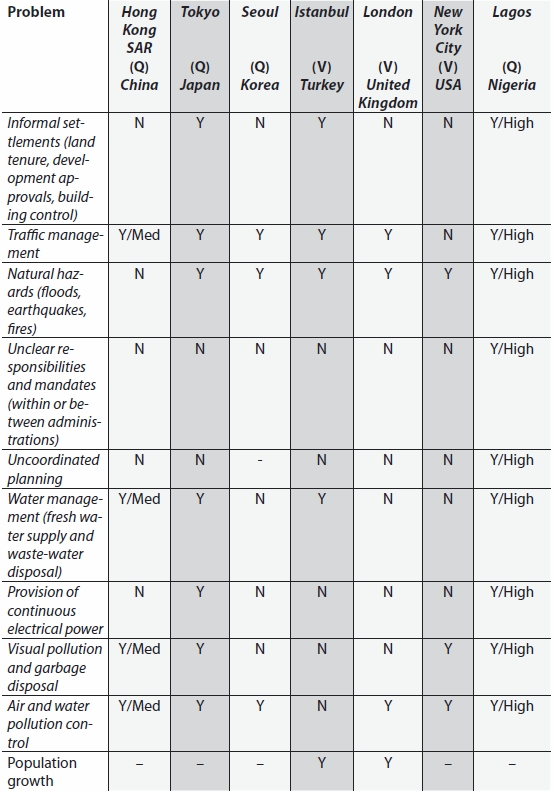
Table 3: Key Problems Facing City Administrations.
Further research indicated that informal settlements are a problem in most megacities, mainly in countries where development controls, housing policies and tenure systems are immature and land administration capacity is low. A particular problem reported by one city is development being allowed in water catchment areas used by the city, but not under development control of city planning authorities. Some of the experience with planning and development laws, regulations, procedures and systems used in some of the cities may be useful to others.
Traffic management is a common problem. City transport and police agencies were not part of the initial information gathering. Given the commonality of the problem, this may be an area for further study.
Natural hazards and emergency management were high on most cities’ lists of concern. Risk profiles from floods, fires, earthquakes and other hazards differ among cities, but capacity to plan, prepare, respond and recover from disasters is a common issue.
It appears that unclear responsibilities and mandates (within or between levels of administration) are not considered by the administrators who were interviewed to be a major issue for cities studied. However, all cities under study appear to have problems with overlapping responsibilities amongst internal and external agencies, leading to operational dysfunction such as a multitude of agencies holding non-accessible spatial data. It is clear that solutions to problems facing megacities require concerted response from many internal units and regional and national agencies in areas such as planning, infrastructure, development and land use controls, transportation, environmental management and water management. Mandates might be clear, but rationalisation of functions and more effective levels of cooperation may still be needed.
It seems that in many megacities, the city administrations do not have responsibility for all matters covering the full area of the cities. Several cities reported that their city administrations did not have control over development, but rather it was the responsibility of subsidiary local government units (an average appears to be around 30 municipal authorities within the area of the “greater city”). In some cases other levels of government had land use and development control responsibilities. So, even if city planning is centrally coordinated, often city administrations have little control over the implementation (land use and building controls) of these plans. In short, some city administrations have control over key city development functions; others do not. The influence of megacities reaches well outside their administrative boundaries to the peri-urban and regions beyond. It is essential that the greater region be managed holistically to maximise the economic benefits of the city. Regional planning places even greater emphasis on effective governance of the larger region, cooperation in planning and development control and information sharing.
An area for further study may be the role of infrastructure providers, such as utility services, not being part of the city planning and development process. In many cases, these authorities are not part of the city administration, being private enterprise or being located at another level of government.
Environmental management, especially pollution control, is another problem area reported by several cities. Again, the experience of some cities in managing environmental problems may be useful to others.
The inevitability of further population growth is likely to be a common issue. Some cities reported that their administrations have little control on population growth. It was a regional or national issue and must be addressed at that level. However, city administrations need to address the consequences of growth, which will add further stress to existing systems and facilities, even for those cities not experiencing problems at the moment. Just finding enough housing for people will be a common problem. Monitoring population change effectively and being able to respond through planning and infrastructure development will be major challenges.
Further research on megacities concluded that impacts might be briefly classified as following:
All the above impacts have a clear spatial dimension.
The rapid growth of megacities causes severe social, economic and ecological problems. How can this growth be nurtured in a sustainable way? The challenge for spatial professionals is to provide megacity managers, both political and professional, with appropriate ‘actionable intelligence’ that is up-to-date, citywide and in a timely manner to support more proactive decision making that encourages more effective sustainable development.
New tools, techniques and policies are required to baseline and integrate the social, economic and environmental factors associated with megacities, to monitor growth and change across the megacity and to forecast areas of risk – all within shorter timeframes than previously accepted. This will lead to more proactive urban planning and environmental management.
Spatial (locationally referenced) information has become indispensable for numerous aspects of urban and rural development, planning and management. The increasing importance of spatial information has been due to recent strides in spatial data capture (especially satellite remote sensing), management (utilising GIS and database tools) and access (witness the growth in web mapping), as well as the development of analytical techniques such as high resolution mapping of urban environments.
A key factor for success will be utilisation of spatial information and technologies to support the operation of the allocation of property rights, housing needs, land use planning, land management and taxation. They will also support management of key problems such as disaster management, flooding control, environmental management, health and transportation.
Just as importantly, managing performance of cities including monitoring, evaluation and reporting functions is a key challenge. This includes data collection and analysis and a conclusion reached was that you couldn’t monitor performance without relevant quality (spatial) information.
The study has found that spatial information and technology is being recognised widely as one of the tools needed to address the big urban problems, but there is still a general lack of knowledge amongst communities of practice about how spatial solutions can be used. The key action required is knowledge transfer, especially amongst users in city administrations. Use of case studies demonstrating current best practice in selected cities could be a way of showing other cities what is possible. However, detailed solutions will need to be tailored by spatial professionals in each instance.
Following rapid urbanisation, the need for updated, precise and continuous representation of our natural environment in general and urban areas in particular, is nowadays one of the more urgent and major tasks the surveying and mapping community has to answer and provide adequate solutions. Major technological developments in data collection and data integration and analysis have been introduced as part of the ICT revolution. These new data acquisition technologies on the one hand, and methods, algorithms and software packages on the other hand, have allowed surveyors, computer experts and the mapping community to provide rapid and frequent updating, integration and analysis of existing spatial databases, and moreover, deal with data volumes, resolution levels, and accuracies that were unknown until recently.
Land management underpins the distribution and management of a key asset of any society, namely its land. For western democracies with their highly geared economies, land management is a key activity of both government and the private sector. Land management and especially the central land administration component aims to deliver efficient land markets and effective management of the use of land in support of economic, social, and environmental sustainability. The land management paradigm, as illustrated in Figure 9, shows the role of land administration functions (land tenure, land value, land use, and land development) and how land administration institutions relate to the historical circumstances of a country and its policy decisions.
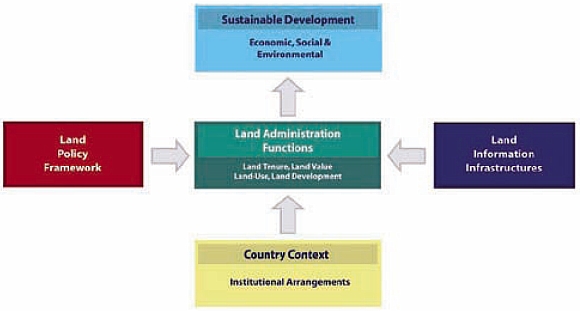
Figure 9: The land management paradigm. (Source: Enemark et al., 2005)
In cities where this land management paradigm exists and is fully functional, change information associated with the ownership, value, use and condition of land and property can normally be obtained from the operational level; where services such as land registration
and cadastral mapping, taxation and development control are provided. This assumes that there is the means to technically and institutionally integrate these component themes of land and property information from a variety of agencies and local authorities into a truly citywide information resource that can be disseminated to decision makers; this is rarely the case even in the western world. In this situation, information is available to formulate robust land policies and to quickly monitor the effect of these policies.
However, in the context of most megacities, a robust information management system to support this land management paradigm does not exist. The explosive growth of the city and the fact that a large proportion of development takes place outside the formal land management and administration process does not support the luxury of change information being fed through from operational services. In addition, the participation of citizens in the decision making process is severely limited since ‘communities’ are informal and not integrated into municipal structures. Robust land administration and management institutional structures are needed but as they are time and cost demanding they may not be introduced into the majority of megacities in the short term. Some governments require tools and techniques that may provide results for megacity management immediately. Therefore, complementary new and innovative sources of information and its management may be used with the objective of immediate results. Urban sensing techniques may be voluntarily used, as pilot projects, and provide a potential source of some of this essential missing information.
The challenge is to provide political and professional megacity managers, citizens and communities with appropriate, up-to-date, citywide information for immediate proactive decision making that encourages more effective sustainable development. But institutional constraints and traditional approaches to large-scale mapping and urban information systems do not always deliver information in a timely manner.
Emerging technological developments and techniques have the potential to strengthen the spatial data infrastructures (SDI) and urban change information so desperately needed. These technological developments can be divided into four groups, namely: (i) data collection; (ii) data integration, processing and analysis; (iii) change detection; and, (iv) potential use of urban sensors.
Until recently, spatial data was basically acquired and measured by one of the following three different techniques:
Recent technological developments feature two new techniques in addition to the existing ones:
Photogrammetry utilizes a pair of stereo images covering approximately the same area from two different directions and positions to produce a stereoscopic model. The geometric properties of objects are determined from the acquired images by a metric measurement of 3D coordinates. Usually, large regions are covered by an aerial strip or a block containing a large number of photographs (and stereoscopic models). As a result, aerial imagery is probably the most common and most effective source to map a region (usually acquiring a digital geospatial dataset or database of the region), as well as to update existing maps (or GI databases).
Similar to aerial imagery, satellite images are common today and are being used in photogrammetry, usually only for production of maps at smaller scales. Though satellite imagery resolution is becoming denser, aerial images still present higher resolution – and are relatively more accurate. The horizontal and vertical accuracy is a variable figure that is a function of the sources and photogrammetric equipment utilised to collect the data. It is worth noting that high quality digital imagery is increasingly available with the development of digital aerial cameras since the 1990s and small digital metric (aerial) cameras in the last few years. Additionally, with the progress in high performance computer hardware and software, automation of part of the photogrammetric processes becomes feasible and techniques from image processing and computer vision have been successfully employed.
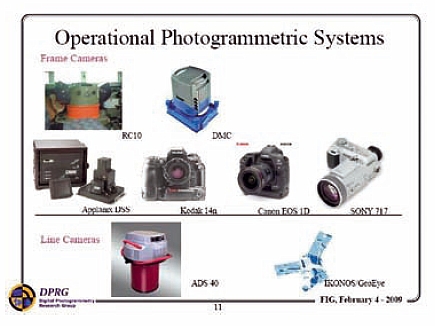
Figure 10: Operational Photogrammetric Systems. (Source: Habib, 2009)
Traditional field surveying techniques acquire the precise location (position) of certain points on earth, i.e., coordinates, by direct measurement. Measuring distances and angles while utilising total-station, or GPS receiver can do this task. Though the accuracy of a position acquired here is very high (in respect to other techniques), this type of equipment deliver much fewer data and is usually used to measure and map only small areas, especially when high level of accuracy is required in dense urban areas. Field surveying is usually being used to measure ground control points as a basis for the photogrammetric process.
Digitisation and scanning can be performed on maps in order to “transform” existing graphical paper maps to a digital dataset (probably as input to a digital geospatial database). This can be achieved by: i) vector-based line following, and; ii) raster-based scanning. Though manual digitisation is still performed, semi-automated and automated algorithms are becoming more available nowadays, and many off-the-shelf geographic information systems software packages are equipped with tools delivering these tasks. Manual quality assurance was widespread when applying theses tasks, though with new automated developments it is becoming less common – and eventually will disappear. Until recently, producing a digital database using digitisation of medium-scale to small-scale maps was very common. Nowadays, these techniques are being used mainly to “digitise” graphical maps of underground infrastructure networks (such as water and sewage networks) where direct field surveying might not be possible or too expensive.
Synthetic Aperture Radar (SAR) technology based on Doppler frequency shifts principle is utilised mainly to acquire images, but these images are very sensitive to terrain variation. Until recently, SAR images were utilised mainly to produce digital terrain models (describing the terrain) either by radargrammetry algorithms by parallax measurement (principally similar to traditional photogrammetry only here it utilises intensity data for measurement), or by interferometric algorithms by phase shifts extracted from two acquired epochs.
In the last few years, based on the remote-sensing satellite technology, small and compact high-resolution radar systems have been developed. These systems can monitor land and buildings from the air as well as from space and are used to monitor structures such as dams, harbours, canals and buildings, leading to mapping of urban areas, for example for planning and cadastral updating. Several flights over the same location enable users to discover changes between pictures, revealing ground movements that could affect structures. This technology can be used for accurate mapping, deformation monitoring (down to millimetres), change detection and many other applications.
Since the mid 1990s, LiDAR technology has been becoming an applicable and available tool for surveying and processing of geospatial data. This system provides a dense and accurate 3D points cloud of the scanned area. The LiDAR system integrates three subsystems: laser scanner, Global Positioning System (GPS) and Inertial Navigation System (INS). The general concept of this system is precise measurement of the time that the pulse generated by the scanner travels to and from an object it hits on the scanned area (i.e., from the launch epoch to the receive epoch). Combined with the GPS and INS subsystems, accurate calculation of the spatial location of the object becomes feasible.
Although the LiDAR system provides a dense 3D points cloud that describes accurately objects within the scanned area, it is not an explicit representation. This is due to the fact that points cannot be classified automatically and semantically as terrain, trees, vegetation, objects (such as buildings), and so on. Moreover, the amount of data is relatively large, and in respect to file size can be several gigabytes. Therefore, an automatic or semiautomatic technique is required to analyse the acquired data. Different strategies to differentiate between ground point and non-ground points such as buildings have been developed in the last few years. These approaches enable automatic (or semi-automatic) reconstruction of buildings and other natural and man-made objects and receive a 3D map of the measured urban area.
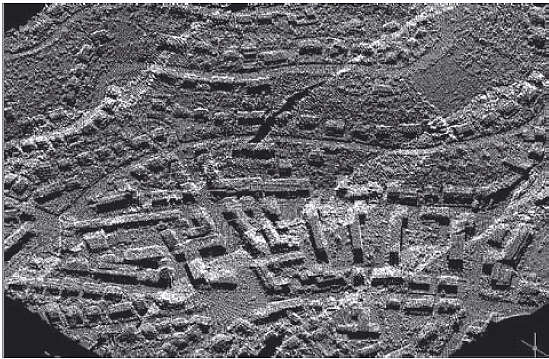
Figure 11: Sample of LiDAR data – a 3D view of urban neighborhood.
During the last decades, major and significant developments have occurred in algorithms, methods and software packages dealing with data integration, data processing and data analysis. These developments have improved the ability to handle and process geospatial information. A few of these abilities are presented in the following sections.
Various institutions collect digital maps using different means, representing different disciplines, kept in different databases and maintained separately. Urban areas in particular are covered by diverse geographic information sources. These facts lead to partial different representations of the same world reality. In order to efficiently use the information, it should be obtained from different sources and merged together by applying an integration process.
Mechanisms for overcoming spatial and semantic heterogeneity in diverse information sources are critical components of any interoperable system. In the case of diverse geographic information sources, such mechanisms present particular difficulties since the semantic structure of geographic information cannot be considered independently of its spatial structure. The issue of integration is even more complicated due to the fact that the different digital datasets (or databases) can contain data in vector format (a discrete data structure, where entities in the world are represented by objects) as well as raster format (a continues data structure, build of a two dimensional array of pixels, where each pixel represents a characteristic of an equal area rectangular of the world). Moreover, a simple solution of overlaying the different digital datasets (by using the straightforward “cut and paste” algorithm) is not applicable due to different geodetic projections and datum.
Integration of heterogeneous datasets has received a lot of attention in the last 1–2 decades. Many researchers have proposed different approaches to the issue. One of these approaches is architecture of wrappers and mediators for integration systems. According to this approach, wrappers extract data from heterogeneous sources and transform the extracted data to a uniform format. A mediator receives data from the wrappers and integrates it. Integration of spatial datasets by finding correspondences between schema elements was also proposed. It was shown that interoperability can be achieved in applications that manage spatial data.
Generally, there are two different types of applications for integration of geospatial datasets, namely map conflation and data fusion. Map conflation is the process of producing a new map (digital dataset) by integrating two existing digital maps. Map conflation of two geospatial datasets starts by choosing some anchors (see the figure below). The anchors are pairs of points, from the two datasets, that represent the same position in the real world. A triangular planar subdivision of the datasets with respect to the anchors (for example by using Delaunay triangulation) is performed and a rubber-sheet transformation is applied to each subdivision. Figure 12 depicts a conflated map based on two different road layers from two sources.
Whilst map conflation deals with integration of vector datasets, data fusion refers more to the process of integrating raster data from multiple sources. In the first step of a fusion, objects or points of interest are extracted from the raster sources using imageprocessing algorithms. In the second step, matching algorithms are applied in order to join the extracted information. The corresponding objects, which are discovered in the second step, can be used as geo-references for matching and fusing the raster datasets.
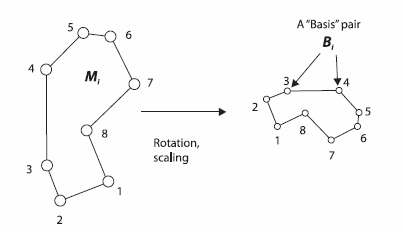
Figure 12: Conflation is depicted by the necessity to use “rotation”,
“scaling” and “translation” operations on homologous objects. (Source: Gabbay,
2004)

Figure 13: A conflation process – two original datasets (left) and the
conflated overlaying result (right). (Source: Gabbay, 2004)
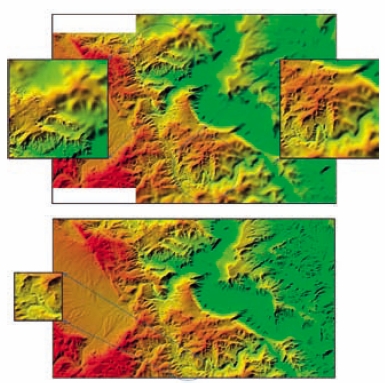
Figure 14: A low quality result of a simple overlapping of two terrain
datasets of different densities (top), and a continuous topological
representation and correct structures of the terrain (bottom). (Source: Katzil
et al., 2005)
Digital terrain models (DTM) that cover very large regions are usually stored as grid (raster) datasets, in which for each grid-point (cell) a height value is given. The main advantages of this method are data handling simplicity and fast data access (needed for various analyses procedures – mostly real-time ones). Usually, datasets that were sampled with high accuracy (and hence are usually dense) will cover smaller regions than the ones sampled with lower accuracy. Simple overlay integration of these separate datasets – can produce model errors, discontinuity and incompleteness. For applications such as visibility maps, terrain analysis and others, utilising models that are incomplete and discontinuous will eventually lead to an incorrect outcome. Direct comparison of different datasets representing the same area can be utilised for morphologic tasks, such as change detection. By superimposing the two models the height difference value of the two models will give a qualitative analysis of topographic changes between the two epochs of collecting the data. In the past, common techniques such as “cut and paste” and “height smoothing” were in use. These techniques are characterised by not preserving the spatial morphology and topography of the terrain.
New approaches and new algorithms were suggested in the last few years, in order to avoid these complications when integrating terrain relief models. These algorithms serve as the basis of establishing reliable and qualitative environmental control processes. As opposed to the previous common techniques, which did not or only globally analysed the corresponding topography of both datasets, in the new algorithms a local thorough investigation of the relative spatial correlations that exist between the datasets is achieved. This prevents distortions as well as an ambiguous and ill-defined modelling analysis. These algorithms are aimed at achieving a continuous topological representation and correct structures of the terrain as represented in the merged DTM, while taking into account the differences in both height field and planar location of terrain entities.
It is worth noting that similar approaches are being implemented when raster datasets (images) are to be merged. The figure below depicts an integration process of two datasets with different level of detailing into a hybrid unified dataset.
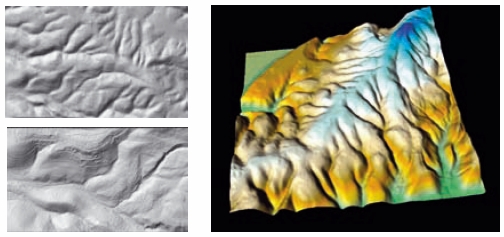
Figure 15: DTM (top-left) and LiDAR (bottom-left) datasets showing
distinctive differences in level of detailing and accuracy (mutual coverage area
is denoted by a dashed rectangle); hybrid dataset (right, rotated 900 counter
clockwise) produced by integrating these datasets (mutual coverage region on
lower-right area). (Source: Doytsher et al., 2009)
One of the common procedures in establishing geographic databases is constructing a seamless database based on separate adjacent maps. The conversion of paper maps such as cadastral blocks into digital data (through processes of digitising or scanning and vectorisation) is usually performed separately, map by map, and only at a second stage are all the separate maps combined into one continuous database. Between adjacent digital maps, gaps and overlaps can be found due to various factors. Among those may be included the accuracy of digitising or scanning processes; inaccuracies inherent in the original drawings; non-homogeneous interpretations by different operators during the input process of boundary lines of adjacent maps, and so on.
Edge matching means the determination of common boundaries of the adjacent maps, thus annulling the gaps and overlaps and achieving continuity of details passing from one map into another (such as roads and power lines). During this process only points lying on the external boundaries of the maps are corrected, thus obtaining a unique definition of those boundaries. This process does not normally correct or change features or points that fall within the map itself and therefore, relative distortions and discrepancies occur between the contents of the map and its boundaries.
It is possible to ignore this phenomenon of relative “disorders” between the boundaries of the maps and their content in cases of low accuracy data and/or maps at a small scale. Nevertheless, when handling geospatial data of urban areas in general and cadastral information in particular, these disorders and distortions cannot and should not be ignored. In these cases, edge matching is insufficient and it is recommended to apply non-linear transformations to solve existing disorders and distortions. Non-linear transformation or rubber-sheeting refers to a process by which a digital map or a layer is “distorted” to allow it to be seamlessly connected to adjacent maps or layers, and/or to be precisely super-imposed to other maps or layers covering the same area. In the last few years various approaches to rubber sheeting have been developed with various proposed solutions, including a polygon morphing technique associated with a Delaunay triangulation, a non-rectangular bilinear interpolation, a triangulation and rubber-sheet transformation for correcting orthoimagery, and others.
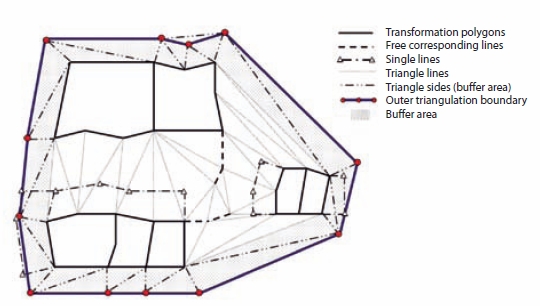
Figure 16: A triangulated rubber-sheeting map sub-division. (Source: Nimre
et al., 2003)
Generating 3D city models is a relevant and challenging task, both from a practical and a scientific point of view. This type of data is extremely important in municipal management, planning, communications, security and defence, tourism, and for many other urban management purposes. Most of the input data for these systems was until recently collected manually “point by point” on digital photogrammetric workstations (DPW) or analytical stereoplotters. In the last two decades, extensive research dealing with 3D building extraction from aerial images on the one hand and from LiDAR points cloud on the other hand has been carried out by the photogrammetric and computer vision communities. However, full automation of object space extraction by autonomous systems is still far from being realised.
There is a great variety of algorithms for automation in building extraction both from aerial images as well as from LiDAR data, algorithms depending on the type of building, level of required detail, usage of external and a priori information, and level of automation and operator interference.
As to aerial images, most of the 3-dimensional algorithms are based on processing at least two solved images (a photogrammetric model) and the assumption that roofs are composed of several spatial polygons and that they can be obtained by extracting all or even only some of them (when the model is known). The algorithms can be divided into two types: those that extract a contour and height (2½D) of flat roof buildings and those that extract the detailed roof (3D) of the buildings. In the figure below the steps of automatic extracting 3D buildings are depicted.
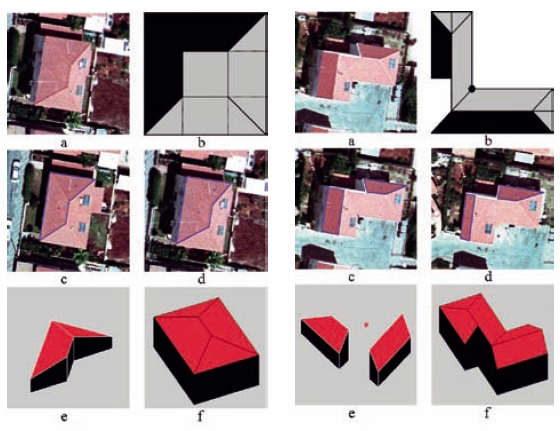
Figure 17: Steps in automatic extraction process of 3D building from
aerial photographs (G-Model roof – left; L-Model roof – right). (Source:
Avrahami et al., 2008)
Since LiDAR technology provides a dense and accurate 3D points cloud of the scanned area only as an explicit representation of the ground surface (terrain together with all connected man-made objects), algorithms has to be developed in order to extract the buildings 3-dimensionally. The extraction of buildings from LiDAR data is usually divided into two parts where the first involves their detection within the points cloud and the second the reconstruction of their 3D shape. Different approaches have been suggested for their detection. These approaches include: edge operators to localize buildings; morphological opening filters to identify the non-buildings; local segmentation to identify detached solid objects; using of external data in the form of ground plans to localize the buildings, and many others.
As for the reconstruction of 3D shapes of buildings, the extraction of the roof primitives in almost all cases is based on segmentation of the points cloud that will seek partition into a set of planar faces. While a large body of research has been devoted into building reconstruction, many challenges still remain unanswered. One such challenge concerns the general planar roof-face assumption that is common to almost all reconstruction models. While planar roof-face buildings are still the majority, buildings with general roof shape can be found in almost every scene. The reconstruction results of buildings are depicted in the following figures.
A sample of extracting the buildings of an urban neighbourhood from LiDAR data is shown in Figure 21. Even though the LiDAR information in this scene is a non-dense points cloud (only 0.6 points per square-meter), the results of extracting the complex buildings, as depicted in the figure below, is impressive. It is worth mentioning that new LiDAR systems are capable of up to 18–20 points per square-meter resolution and the potential for extracting very detailed urban scenes and build accurate and precise 3D city models is very high.
There are two types of laser scanners, namely, airborne and terrestrial. Even though the characteristics of the two types are similar, they are dissimilar in terms of the measuring range, density of the measured points cloud, precision, and other factors. Using terrestrial laser scanners is being used to construct realistic 3D building facade models of urban scenes. These models are beneficial to various fields such as urban planning, heritage documentation and better decision-making and organization of the urban environment. Laser data and optical data have a complementary nature when extraction of 3-dimensional feature is required. As efficient integration of these two data sources will lead to a more reliable and automated extraction of 3D features, automatic and semiautomatic building facade reconstruction approaches and algorithms have been developed that efficiently combine information from terrestrial laser point clouds and close range images. The result of a terrestrial laser scanning (a points cloud containing several hundred thousands points) presented in the figure below depicts the inherent potential of this technology to construct realistic 3D building facade models of urban scenes.
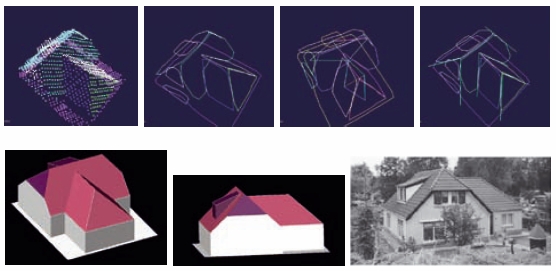
Figure 18: Steps in automatic extraction process of 3D building from
LiDAR data – segmentation → segments handling
→ topological analysis →
line and vertices extraction (top from left to right); the extracted 3D building
and results verification (bottom from left to right). (Source: Abo Akel et al.,
2006)
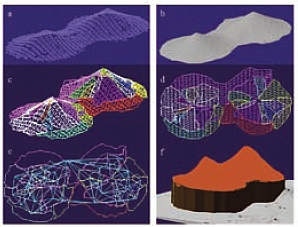 Figure 19: Reconstruction of a building with a free-form roof surface: (a) point cloud; (c) segmented point cloud; (d) segmented point cloud in down-looking view; (e) connectivity graph; (f) reconstruction results. (Abo Akel et al., 2009) |
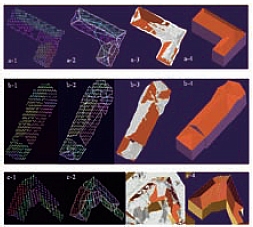 Figure 20: Reconstruction results of three complex buildings. Left to right: segmented point cloud; segments boundaries; roof topology; final reconstruction results. (Abo Akel et al., 2009) |

Figure 21: A 3D view of an urban neighborhood showing the original LiDAR
data (right) and the complete reconstruction results (left). (Source: Abo Akel
et al., 2009)
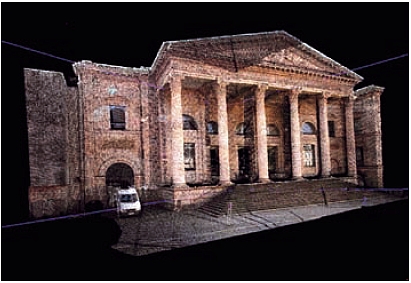
Figure 22: Results of a terrestrial scanning of a complex facade.
Automatic change detection in the field of photogrammetry can be used to monitor manmade objects (structures) like roads and buildings. This process is necessary for map updating, particular in urban areas (and megacities), a process which is an otherwise expensive and time consuming task if done manually.
Although in its general form the problem of automatic change detection is complex and difficult to solve, on well-defined applications it is possible to achieve good results by imposing certain constraints. The available change detection methods are many and diverse. However, the basic attributes of all these algorithms are mainly common and any differences are due to different combinations of attribute values. The following are some of the most distinctive attributes (Psaltis and Ioannidis, 2010):
Monitoring the urban and suburban environment for illegal buildings illustrates the potential of using change detection. Based on some factors such as land use zones and building regulations, a schematic overview to the problem is depicted in figure 23.
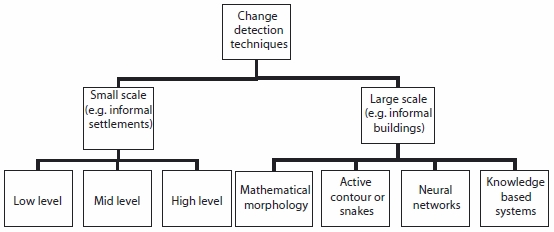
Figure 23: Change detection techniques categorized by scale. (Source:
Ioannidis et al, 2009)
In small scales, such as cases of informal settlement monitoring, the problem is being addressed by various classification-segmentation techniques from the field of remote sensing. Such techniques can be categorized as low level, mid level and high level, in respect to the information used to address the problem.
In small scale, low level techniques consider information in pixel level to facilitate change. Image differencing, rationing and principal component analysis (PCA) techniques were commonly used in the past. Today they are still used in modern processes, but only as part of a wider approach and in conjunction with each other. Their main weakness is that they are unable to cope with variations in atmospheric conditions, ground conditions and illumination. Slightly evolved mid level techniques were introduced to overcome these problems. Object oriented classification, feature and texture segmentation are some widely used examples. These techniques are more robust than the low level methods as they use higher level of information to detect change, but are still case dependent and difficult to extend. The current trend is to use high-level techniques. These methods are also known as knowledge based methods or expert systems. They incorporate cognitive functions to improve image-scene analysis and they make use of a wide variety of data. Their major advantage is that by using high-level information and data fusion these systems are robust and effective, approaching the problem in a more holistic way.
In large scales, such as monitoring individual buildings, the problem is usually more complicated. A basic procedure can be seen in figure 24. First, buildings are extracted and then they are back projected to the reference data where it is determined if there has been a change.

Figure 24: Phases of informal building monitoring. (Source: Ioannidis et al,
2009)
All of the above procedures can be automated, but with different levels of difficulty and success. Building extraction is by far the most difficult task to automate. As the algorithms might miss certain objects or include some objects that are not buildings, such as trees, the results of these procedures should be carefully analysed by the users.
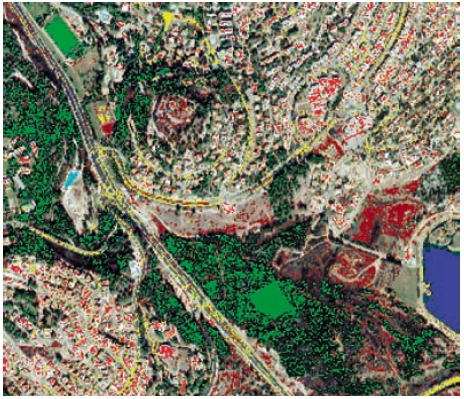
Figure 25: Change detection results – a comparison of satellite imagery and
aerial photograph. (Source: Beit-Yaakov, 2003)
A new generation of citizen-activated sensors in the urban environment is creating opportunities for collecting and managing a wide range of urban information. This is termed ‘urban sensing’ and uses a wide variety of sources including cellular phones, Radio Frequency Identification (RFID) tagged items, GIS related technologies, Web 2.0 and crowd sourcing (mass collaboration using Web 2.0) to support the creation of a public infrastructure, a ‘data commons,’ that will enable the citizen to participate (voluntarily) more effectively in politics, civics (including land administration and management), aesthetics and science. In this study, the term “citizen-activated” implies a voluntary citizen activity.
RFID tags are like barcodes that broadcast their information. They are now embedded in an increasing number of personal items and identity documents, including transport and toll passes, office key cards, school identity cards, “contactless” credit cards, clothing, phones and even groceries. Such devices should only be employed by government with full disclosure and popular acceptance.
In the USA, new drivers’ licenses (on a voluntary basis) incorporate RFID tags that can be read – while still in a wallet – from as far away as 10 metres. Each tag incorporates a tiny microchip encoded with a unique identifier number. This is designed to make border crossing more efficient. As the bearer approaches a border station a radio signal causes the chip to emit its unique number, which is used to search a database to display their photo and other information to the border agent as they arrive.
Tracking infrastructure could be installed city wide to monitor movement of individuals. In Alton Towers theme park (http://www.altontowers.com) visitors can opt to purchase a ‘YourDay’ DVD souvenir. A RFID tagged wristband tracks them and triggers video recording when they are at particular attractions. At the end of their visit, they take home a unique personalised DVD showing them at each attraction. This is a commercial enterprise in the UK with full disclosure and the understanding of the visitors. It is not a program imposed by government.
However RFID tags were designed to be powerful tracking devices and typically incorporate little security. People wearing or carrying them are therefore vulnerable to surreptitious surveillance, tracking and profiling. Therefore such devices if they are to be employed by government for any purpose should first be fully explained to the public for popular acceptance or rejection.
It is not feasible to set up centrally controlled sensors for all environmental variables that need monitoring in a megacity. An alternative could be the implementation of data collection through the voluntary use of mobile phones. These are becoming passive sensors that silently collect, exchange and process information continuously. As well as recording sounds, they can record images and locations and, in the future, cheap sensors may be added to detect some environmental variables such as air and noise pollution.
Already referred to as M(mobile)-government when directly used by urban managers, citizens own phones open up additional channels and have significant potential to increase participation. For megacities, M-government through mobile phones has the potential to considerably increase the type and currency of information available, such as pollution incidents, traffic congestion etc. This information could become part of a public information infrastructure that would need first to be authenticated, managed, prioritised and acted upon by the megacity authorities. The obvious downside to these systems is the overloading of the management agencies with huge volumes of data.
The constant surveillance of peoples’ locations can be highly sensitive. However, the convergence of location based services (LBS) and social networking providing real time social interactions has triggered the controlled sharing of location information with designated people participating voluntarily. People appear to be comfortable sharing their location information with known individuals or where there is an incentive. For example, the Massachusetts Institute of Technology is attempting to alleviate traffic jams using mobile sensors. It captures real-time location and speed information from fleets of limousines and taxis as well as road conditions. A central computer then calculates traffic patterns and can predict optimal routes. In the future, this could be deployed through smartphones with programs that can perform similar functions, relying on regular commuters willing to participate who can download the programs online. So the incentive to provide location information is real time route optimisation. In megacities, citizens’ incentives could be reduced transport costs, travel times or road tax.
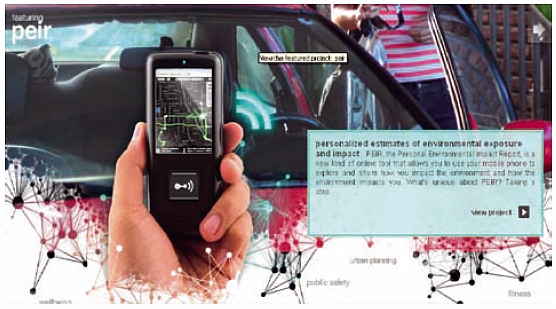
Figure 26: Personalized estimates of environmental exposure. (Source:
http://urban.cens.ucla.edu/)
e-Government
In developing countries, this e-government source of information is at an early stage of development and is hindered by the lack of fixed line telecommunications. But, e-government extended into M-government has a greater potential within these megacities as mobile communications become ubiquitous.
Crowdsourcing / Distributed Citizen Sensing
Crowdsourcing means that a task or problem is outsourced by an open call to the public (undefined group of people) rather than another body, for example Wikipedia. Citizens volunteer to collect and sometimes maintain information for a variety of initiatives. These on-line communities self-organise into productive units and have produced some excellent results, including:
The ease and increasing use of GPS for data capture, adoption of data standards, the availability of Web 2.0 tools and the efficiency of mashups for managing and distributing information are accelerating the growth of crowdsourcing and distributed citizen sensing. After Hurricane Katrina in New Orleans, two software engineers created www.scipionus.com to enable thousands of citizens to post emergency information on a visual wiki. This became much more important than the official sources of information. A similar service has operated in California during recent forest fire events. In Kenya, a web-based reporting tool called ushahidi, “testimony” in Swahili, enables citizens caught up in political unrest to report incidents of killing, violence and displacement. It is an open source tool to aggregate crowdsourced information for use in crisis response.
In Doetinchem in the Netherlands, a 12 metre tall tower (see the figure below) maps emotions of the inhabitants. The tower changes the lights according to emotions reflected from the D-tower website (www.d-toren.nl).
The new generation of urban sensors has significant potential in providing the managers of megacities with unparalleled access to a comprehensive range of current spatial and environmental information about the evolving workings of the megacity. Peoples’ movements can be monitored; their use and modes of transport determined and people can voluntarily provide information about changes to their environment. However a number of prerequisites are indicated:
It is probable that people will participate when provided with smooth and ubiquitous access to information and the ease of providing information through m-government applications, for example. The increased levels and quality of participation will most likely take time to evolve as citizens gradually realise tangible evidence of urban improvements related to their participation. One initial consequence may be that city authorities just receive hundreds of trivial requests for services. This traffic must be managed effectively and acted upon in a beneficial manner by city authorities to build trust with the citizens.
The successful introduction of urban sensing will involve considerable cultural and behavioural change of politicians, government officials, the business community and citizens and develop incrementally as policies and legislation evolve. It has great potential to fill the current gaps in urban information needed to understand the dynamics of megacities.
So far at the national spatial data infrastructure level, no country has generated data management policies that truly integrate and utilise this new, valuable resource of large scale, citizen initiated information. This paradigm shift has yet to be understood and absorbed at a national level.
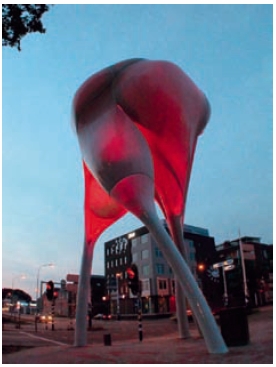
Figure 27: Interactive D-Tower in the Netherlands. (Photo: Henk Vlasblom)
A caveat
Such devices as citizen-activated sensors, RFID and LBS may provide government with efficient and practical means of data collection in support of urban management and environmental monitoring.
However, these devices are also potential tools for citizen control by totalitarian governments. What may begin as traffic control may be adapted to crowd and demonstration control. The D-Tower of the Netherlands could easily become a device designed to give a repressive government of some other country a means of early detection and suppression of popular dissent. All such “urban sensing” devices must be subject to full public awareness and acceptance. There must be an enactment of enabling legislation. Due process must be available to the citizenry of any democracy, including judicial challenge and final adjudication.
These devices are currently in experimental stages primarily in countries with developed economies and long established democratic processes. There would be a major risk in introducing such systems in unstable governments in developing economies.
The concept of spatial data infrastructures (SDI) has been developed to encompass the efficient and effective collation, management, access and use of spatial data. SDI has been adopted in many countries around the world, notably at national level, but frequently found at sub-national levels based on regional or local government areas. SDI has been seen as a purely governmental mechanism and it is true that government agencies constitute the greatest collectors and users of spatial information. However, there is a clear trend to involve diverse user communities that incorporate elements of the private sector and non-governmental organisations to ensure that investments in spatial data development yield the greatest possible benefit.
Definition of SDIThe term “Spatial Data Infrastructure” (SDI) is often used to denote the relevant base collection of technologies, policies and institutional arrangements that facilitate the availability of and access to spatial data. The SDI provides a basis for spatial data discovery, evaluation, and application for users and providers within all levels of government, the commercial sector, the non-profit sector, academia and by citizens in general. The GSDI Cookbook v2, Global Spatial Data Infrastructure Association, January 2004 |
Developing and implementing an SDI should be seen as an integral component of a jurisdiction’s overall social and physical infrastructure planning.
However, the development of an SDI is problematic. Key issues have been the diversity of data sources and management of spatial data, usually spread across a multitude of agencies and organisations focused on single mandates. A challenge has been to develop new institutional arrangements to allow implementation of appropriate integration of data, adoption of relevant data standards and meet a growing range of needs for spatial data products. These arrangements vary from choosing an existing agency to lead SDI development (such as the agency responsible for land administration), through formal coordinating committees to formation of a specialist “SDI” agency. The choice will be based on prevailing administrative, legal and social cultures found in a jurisdiction.
The role that SDI initiatives are playing within society is changing. SDI was initially conceived as a mechanism to facilitate access and sharing of spatial data for use within a geographic information system environment. This was achieved through the use of a distributed network of data custodians and stakeholders in the spatial information community. However, users now require the ability to gain access to precise spatial information in real time about real world objects, in order to support more effective cross-jurisdictional and inter-agency decision-making in priority areas such as emergency management, disaster relief, natural resource management and water rights. The ability to gain access to information and services has moved well beyond the domain of single organisations, and SDI now requires an enabling platform to support the chaining of services across participating organisations.
Providing information is a key government function. Information is essential to enable agencies to produce the government’s expected outcomes and to meet community expectations. Increasingly, effective sharing of information is critical to the success of whole of government outcomes. ICT underpins and enables improved information sharing and information management approaches by agencies.
The need to share information among agencies or across the whole of government broadly falls into four categories:
Improving agencies’ capability to transfer and exchange information, aimed at improved decision-making and community services and with appropriate privacy protection, is critical and will require improved interoperability between agencies’ information systems. In the longer term it will require agencies to adopt and implement common information policies, standards and protocols. Potential common frameworks, policies and standards will need to be flexible enough to respond to agencies’ varying business requirements.
As noted – “the most profound technologies are those that disappear. They weave themselves into fabric of everyday life until they are indistinguishable from it.” (Weiser M., 1991) Spatial information has become pervasive in all aspects of our daily life and is a relatively recent phenomenon. The crux of this rapid change is due to a number of converging factors involving technology, applications and standards. These include:
Spatial analysis can be a heavy user of computer power, data storage and
telecommunications and this cost has been, in the past, a constraint to using
large volumes of spatial data. However, cost per unit storage is declining at
45% per annum. Depending on required operational configuration, cost (in US
dollars) of 1 Terabyte was between $102 and $1,224 in 2007. The cost for the
same amount of storage in 2010 is projected to be between $17 and $204,
diminishing to well under $1 by 2020. Similarly, computation and data
transmission has been put within everyone’s reach. Just like hardware
storage, they follow Moore’s Law. For example 1 GFLOPS (a commonly used measure
of computing performance) cost $0.50 in 2007, as opposed to $1,000 in 2000.
However, the most profound increase in use of spatial data has been through the convergence of measurement technology, global positioning systems, remote sensing technologies, mobile devices and communication technologies to create a locationally- aware capability not thought of several years ago. Demand is for spatial information that has high resolution, is current, immediate and available anywhere.
Traditional media and advertising companies have expanded the notion of ‘content’ to beyond their conventional interests: it now includes spatial information. Google, Yahoo and Microsoft have acquired spatial content and developed technologies that exploit spatial data to extend, enhance or provide a completely new range of location-based services.
Finally, there is an emerging trend towards integrated decision support systems where spatial data plays a pivotal role.
Whole of city administration action that would improve access to spatial data includes:
Because city programs and their executive agencies often depend on data collected by other levels of government, transparent and cost efficient access to jurisdictional data is becoming an increasingly important issue in effective delivery of national programs. Indeed, structural inefficiency in access to spatial data could have an increasing impact on national economic activity and delivery of social and environmental outcomes.
Current problems for agencies finding, accessing and using jurisdictional data can be summarised as:
The term SDI is often used to denote the relevant base collection of technologies, policies and institutional arrangements that facilitate the availability of and access to spatial data. A spatial data infrastructure provides a basis for spatial data discovery, evaluation, download and application for users and providers within all levels of government, the commercial sector, the non-profit sector, academia and the general public.
The word infrastructure is used to promote the concept of a reliable, supporting environment, analogous to a road or telecommunications network. Spatial data infrastructures facilitate access to locationally referenced information using a minimum set of standard practices, protocols, and specifications. Spatial data infrastructures are commonly delivered electronically via the Internet.
The development of an SDI initiative should aim to provide better access for all citizens to essential spatial data. It aims to ensure that users of spatial data will be able to acquire consistent datasets to meet their requirements, even though the data is collected and maintained by different authorities.
The implementation of an SDI is based on policy and administrative arrangements, people and technology, and a means by which spatial data is made accessible to the community. This infrastructure can be compared to services infrastructures, such as road, rail and electricity networks. The implementation of an SDI is usually not to establish a central database, but to set up a distributed network of databases, managed by individual government and industry custodians.
The establishment of a city-wide spatial data infrastructure where data collection, maintenance and delivery capabilities can be shared rather than duplicated will resolve much of the current problem with duplication, lack of standards and complex discovery and access to existing spatial data. Such an infrastructure would also provide additional benefit since there are many other government (and commercial) activities that can be better served through common elements in a spatial infrastructure.
There is a need to resist the impulse to micro-manage all aspects of spatial data collection, management and use across government. Focus should be on a framework that invests in use of spatial data and provides incentives for collaboration to achieve national outcomes. The SDI would encompass the physical aspects of:
Administration
Technical
Locationally referenced information has become indispensable for numerous aspects of urban and rural development, planning and management. The increasing importance of spatial information has been due to recent strides in spatial data capture (especially satellite remote sensing), management (utilizing GIS and database tools) and access (witness the growth in web mapping), as well as the development of analytical techniques such as high resolution mapping of urban environments. (See table 4.)
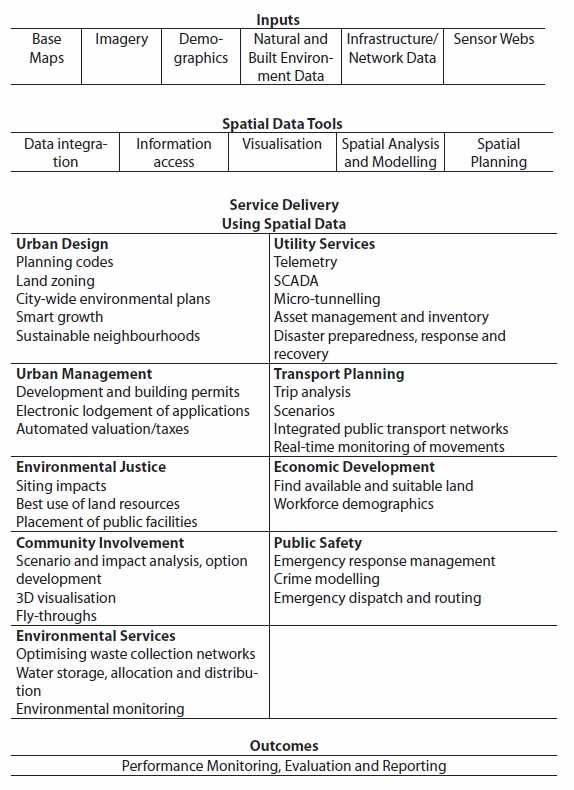
Table 4: Use of Spatial Data in City Administration. (Source: Spatial
Strategies Pty Ltd Australia)
This section presents the results of an investigation that collected information about current use of SDI in the world’s largest metropolitan areas using online resources. A short overview of general NSDI development for all countries of the world holding at least one megacity will be provided, as will be the use of SDI or comparable initiatives in the associated metropolitan areas. Leaving legislative and organisational SDI aspects aside, the evaluation focuses on the technical aspects of the use of spatial information technology in megacity management. The classification of the results is done on the basis of usability and accessibility of spatial data, which was identified by the internet search.
Like in the home countries of the megacities, the application of spatial information technology in the megacities of the world is largely diverse. The table below shows the availability of digital spatial data in the megacities under review. The application of spatial information technology in the cities under consideration varies considerably. It starts from the provision of simple WebGIS applications which only show the road network and some less basic data like in Jakarta or Mumbai, it comprises advanced applications which enable the presentation of social, economic, ecological and urban information related to the city (e.g., Buenos Aires, Los Angeles, Paris) and it ends up with highly elaborated comprehensive distributed information systems which can be found in Seoul, London and New York City.
The evaluation framework used in Table 5 consists of five categories that are designed to classify all investigated items. If, for whatever reason, only little information on an item could be found on the web, the corresponding item was marked with SDI development status unknown. If initial activities towards SDI development were observed the status SDI master plan available was given. Primary spatial data available refers to original data, like survey data, data with limited interpretation like water bodies or boundaries, which are obtained without analysis or very less interpretation. Secondary spatial data available refers to thematic data that is derived from the analysis of primary data, statistical data collection and/or image interpretation. If the captured data was found to be available via a Geoportal or a similar distributed web application then the mark Spatial Data Accessibility available was given.
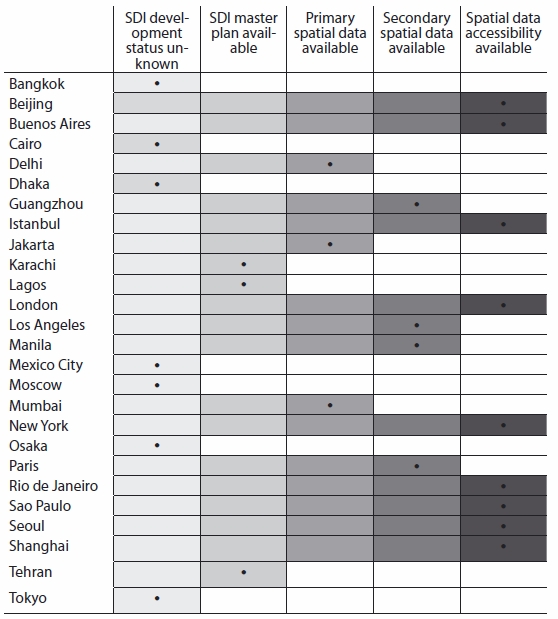
Table 5: Application of SDI in the world’s megacities. (Source: Boos and
Mueller, 2009)
NSDI in Egypt is still rudimental. Considering the underdeveloped NSDI of Egypt, it is no surprise that for the city of Cairo no information concerning SDI development or comparable initiatives could be found.
Nigeria started the implementation of a National Geospatial Data Infrastructure (NGDI) in 2003. In 2007, the government of Lagos constituted a committee for the provision of a fully digital mapping and enterprise GIS for Lagos State. The policy framework adopted by the administration for the development of Lagos should be reached by generation and sharing of information with organised private sector, developing skilled and knowledgeable workers.
In Bangladesh no official NSDI exists. In accordance with the rudimental national SDI initiatives in Bangladesh in Dhaka neither city SDI nor any WebGIS application or similar was identified.
China has paid great attention to construct the Digital China Geospatial Framework (DCGF). A series of fundamental spatial databases was completed as the kernel of DCGF. A fully digital nationwide spatial data production system is widely established. In 2002, the Shanghai Municipal Government announced the Digital City Shanghai strategy. In this context, a distributed WebGIS application was developed for managing landscape resources, which allows the connection of all landscape bureaus of the city where data are kept locally for maintenance and updates. This data are also available online to the central bureau and other local bureaux. In 2004, the city authority of Guangzhou, the capital city of south China, initiated the Digital Municipality of Guangzhou (DigiM. GZ) project which aims to represent the Guangzhou metropolitan area as a digitalised virtual municipality by using a wide range of up-to-date GIS and telecommunications technologies. In Beijing, the Beijing Digital Green Management Information System integrates a database of landscaping areas and a database of social, economic, ecological and urban infrastructure.
The NSDI scheme in India (established in 2001) aims at using GIS to merge satellite imagery and ancient topographic maps with data on water resources, flooding, rainfall, crop patterns, and civic layouts to produce 3-D digital maps. Another objective of the Indian NSDI is to achieve a national coverage of all forest maps, land use, groundwater and wasteland maps, pollution data, meteorological department’s weather-info and department of ocean development’s sea maps. In 2005/06 in the Handni Chowk area of the walled city of Delhi, a pilot study on generating a 3D-GIS database was accomplished. The database was created by using a base map at scale 1:2,500, high resolution satellite data, ground control points, video of the area, high resolution DEM from LiDAR/ ALTM and by 3D GIS data processing and analysis software. In Mumbai various GIS applications for small areas with different aims have been made. The Mumbai Metropolitan Region Development Authority (MMRDA) recognised the usefulness of this technology and thus proposes in its Regional Plan (1996–2011) to build up a Regional Information System. These developments may be stimulated by the Collective Research Initiative Trust (CRIT), which plans to generate an open-access SDI and a set of simple tools and applications for knowledge transfer and participatory urban planning by communities and citizens in Mumbai.
The Indonesian NSDI aims at improvement of coordination mechanism, completion of spatial databases and national metadata developments, activation of national clearinghouse and development of Digital Indonesia. The city of Jakarta has a simple WebGIS application, which represents the road network of the city and enables different search functions to find streets and points of interest.
In Iran, national organisations, ministry and municipal offices as well as private companies are active in the field of mapping and spatial data production. The Tehran municipality, the Public and International Relations Department has committed to the development of a WebGIS with more than 140 layers.
In Japan, the NSDI is implemented by the Geographical Survey Institute (GSI), who with other ministries, began their work on the Spatial Data Framework in 1995 and completed it in 2003. The future work of the Japanese NSDI concentrates on a new infrastructure concept, which is promoted as “Digital Japan” and which shall lead to a virtual and real-time representation of the land. Concerning the two Japanese megacities Osaka and Tokyo, the internet investigation could not extract any specific SDIinitiatives, although the survey response from Tokyo indicated that base mapping and agency-specific spatial applications do exist. Both cities developed long-term master plans where principal goals for city planning are formulated, but no SDI strategy could be identified.
In Pakistan no official NSDI was established. In its “Megacities Preparation Project” from 2005 Karachi’s government schedules the development of digital maps of the city by using GIS technologies.
First official activities for establishing an NSDI in Philippines were initiated in 2001. As part of a developing country Metro Manila has not yet a comprehensive SDI available. A disaster management information system called “Metro Manila Map Viewer” was developed in 2004.
The first phase of an NSDI Master Plan for South Korea was completed in 2000. Basic GIS infrastructure has been established by producing various kinds of digital maps. The second phase of the NSDI, which started in 2001, concentrated on spreading a GIS application for maintaining the digital maps and developing national standards. The city of Seoul has at its disposal a widespread SDI on the technical base of several distributed GIS applications like Urban Planning Information System, Road Information System, Soil Information System and other municipal affairs Information Systems. A Spatial Data Warehouse is available which provides for sharing and accessing the different spatial data of the GIS systems via a GIS portal system.
Development of the Thailand NSDI is part of the Thai Government’s scheme for a comprehensive utilisation of information technologies to support administration and public services. The key mechanism is the development of e-Government in which GIS is a key component and plays an important role in providing for dynamic information to support better governance of the country. For the city of Bangkok there is a web page in Thai language that seems to grant access to a comprehensive collection of spatial data in different GIS applications.
In France there is no explicit overall governmental initiative to develop an NSDI even though a geoportal was launched in 2006 and a multitude of NSDI-like initiatives are undertaken. In Paris a WebGIS application gives access to the most important spatial data about the city. It is possible to access a series of thematic maps through a multiplicity of data layers.
Russia’s NSDI concept schedules a three-stage process, which should be finalised by 2015 with the implementation of the national NSDI. For the city of Moscow no specific SDI solution information could be found during the internet investigation.
There are several persisting problems in the field of SDI in Turkey: lack of coordination between institutions; no standardisation, neither with regard to the spatial reference system nor to data quality or data exchange; data duplication; the majority of large scale data not available in digital format; interoperability does not (yet) exist; lack of expert personnel and budget; and a lot of difficulties to share data. Istanbul’s Water and Sewerage Administration (ISKI) developed the Infrastructure Information System (ISKABIS) to control and manage extensive water and wastewater facilities for the Istanbul Metropolitan Area with more than 30 applications implemented. The city administration of Istanbul provides a WebGIS, which represents the road network for the metropolitan area of Istanbul containing a precise division into lots and house numbers, orthophotos of different years and a range of thematic information.
There is now a formal Location Strategy for the United Kingdom with a single organisation responsible for its establishment and coordination. The country as a whole has a well developed spatial information sector, with extensive datasets available from both public and private sector sources. The government of the city of London provides the City Online Maps Project Accessing Spatial Systems (COMPASS), which aims at improving access to information about London through a unique access point. One remarkable SDI application in London is the Newham Neighbourhood Information Management System (NIMS), where users gain access to data on economic, social and environmental conditions of the borough.
In 2004 the National Geographic Information System of the Republic of Argentina (PROSIGA) started as an online distributed GIS, in which seven specific SDI working groups cover: institutional framework, policy and agreements, fundamental and basic data, metadata and catalogues, diffusion and communication, training, search engine for geographic names and information technology for SDI. The Department of Geographic Information Systems of the city administration of Buenos Aires developed a widespread WebGIS application built up on open source components and integrating a multiplicity of spatial data about the city. The GIS covers a range of applications like health, education, tourism, sports, culture, leisure, green spaces, social services and transportation, and enables access to information down to parcel units.
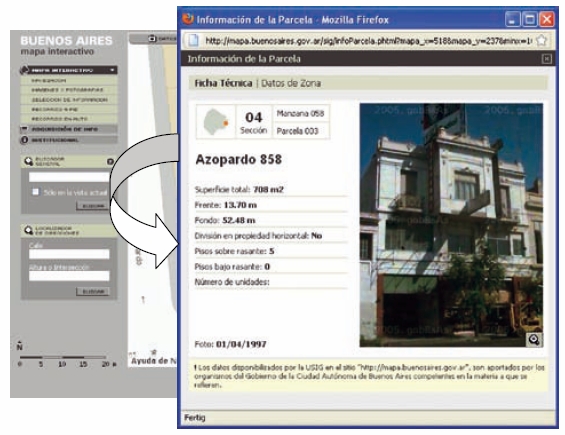
Figure 28: Public access to parcel information of the City of Buenos
Aires, Argentina. (Source:
http://mapa.buenosaires.gov.ar/sig/index.phtml)
The Brazilian cartographic community, in particular Federal Government agencies, made great efforts to constitute an NSDI in Brazil. Map servers offer diverse information and provide for spatial data of the whole country. The department for planning of the city of Sao Paulo makes an online portal available, which enables access to a multiplicity of statistical data, thematic maps and allows for the visualisation of infrastructure data in a WebGIS client. For Rio de Janeiro the department of city planning offers digital maps and databases of the municipality of Rio in a geoportal and allows for download of statistical tables, maps and spatial data.
The Mexican NSDI implementation has been led by the National Institute of Geography, Statistics and Informatics (INEGI) since 1997. INEGI developed an internet presence (GeoPortal), where users can view and download a series of spatial data, including appropriate metadata. For the Mexican megacity Mexico City the internet investigation did not find any specific SDI-like initiative.
The United States clearinghouse was established in 1994 with the US Federal Geographic Data Committee (FGDC) given responsibility for NSDI implementation. The NSDI major development focus is at the United States federal level, although efforts have been made to support coordination at State level as well. Spatial data is provided in a nationwide geoportal offering a multiplicity of functions to access, publish and share spatial data in a widespread number of categories. New York City has an interactive city map showing information on transportation, education, public safety, resident service and city life. The Office of Emergency Management operates a GIS, which maps and accesses a variety of data from flood zones and local infrastructure to population density and blocked roads – before, during, and after an emergency. Beyond that, the city government runs a spatially-enabled public website called ‘ACCESS NYC’, which has the capability to identify and display over 30 City, State, and Federal human service benefit programs to explore appropriate services for individual users needs. The Los Angeles city administration publishes a collection of interactive maps containing information on traffic, parcels, flooding, city services, leisure and other information.
It was interesting to note that those senior administrators interviewed during the study candidly admitted the importance of spatial data and analysis in helping them do their job. As users of spatial information, they personally believed that access to timely and accurate spatial data and tools was a key requirement in managing functions such as city planning.
Correspondents to the study reported widespread use of spatial data in a range of city functions, including:
In fact, collection and usage is so widespread that data integration, access and use was hampered by the diversity of data holdings and systems managed by individual units. Getting data for planning processes, for example, can be difficult, costly and slow. Fundamental data management standards were not being used.
Access to data held by other levels of government was also problematic. Collating data across internal units and external agencies was an impediment to providing timely information to citizens.
All cities reported that they had at least some elements of an SDI. Most cities reported that they had only small central GIS units, which were usually under-resourced and so unable to develop a comprehensive citywide SDI. Missing capabilities included no common metadata, spatial data policies and standards, formal data sharing arrangements between units or agencies or shared data access mechanism.
Most do not have a formal spatial data or GIS strategy across the whole administration. However, most countries covered by this project have national (and in some cases regional) SDI strategies. Unfortunately, at this stage it is not clear to the study group what connection there is between national and local strategies or how national strategies will meet the needs of cities.
Some cities have developed an intranet that could be used to access spatial data held across multiple units.
The results of the survey and internet research show that several cities have invested in providing access to spatial data as part of public websites that report information about aspects of city administration such as land tenure, use, planning, environmental and disaster management information. These could be used as exemplars by other cities.
So far among the most sophisticated, implemented and operating spatial data infrastructures in the European region, according to the INSPIRE principles, is the Norwegian NSDI, with more than 210,000 reference and 50,000 thematic datasets of standardised spatial data, available through a geoportal, and more than 600 partners and 100 operational web map services (WMS).
Reference data includes topographic data, hydrography, roads and other infrastructure, land-use, buildings and cadastral information, elevation and bathymetry, and orthophoto layer. Thematic data includes a broad range of information produced by national institutions and municipalities such as demography, risk management, protected sites, biodiversity, pollution, fisheries, geology, mineral resources, agricultural and forest resources, cultural heritage and outdoor recreation facilities. Government’s priority is to make everyday life simpler for the citizen and secure the future welfare. All relevant interactive public services for the citizens are available through the citizens’ portal “My Page” by 2009 (Figure 29).
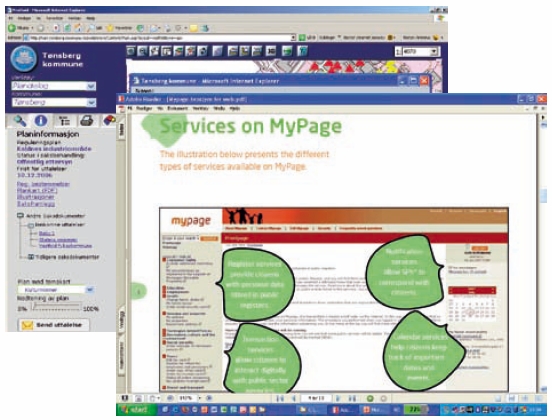
Figure 29: Citizen Services on Norwegian MyPage Geoportal. (Source: Strande,
2009)
Data from a large amount of agencies with national coverage and from local authorities, available on standard formats, are disseminated through WMS. On an average there are about 200,000 downloads every day. All municipalities have adopted a common ICT strategy to facilitate citizen participation in the political decisions through electronic channels for dialogue among citizens, the municipality and the politicians. WMS give better information exchange within the organization and with the citizens in public hearings and makes it easier to make inter-municipal map solutions. Through a specific tool that provides 3D visualization of data, which is currently integrated in the Norwegian NSDI interactive administrators’, citizens’, architects’ and property owners’ participation in the planning process and the natural resources management is facilitated. The benefits of this initiative are well understood:
As spatial planning and building permitting in Norway is a task under the responsibility of the municipalities, it is now a requirement that the municipalities should carry out risk and vulnerability mapping analysis. Each municipality should prepare a list with the most typical risk and vulnerability problems in its area, plus an overview of all relevant regulations e.g., for water management, noise descriptions, security zones around industrial areas, etc. Such maps and analyses are required at a more detailed level before building permits are given. The municipality should guarantee that any spatial planning and development permitting decision would not create risks for people, environment and material values. It is important that risk information is easily available when the building permit is handled, so new buildings are not located in dangerous or ecologically fragile areas such as mudslide areas, and that flood possibilities are taken into consideration (Figure 30).
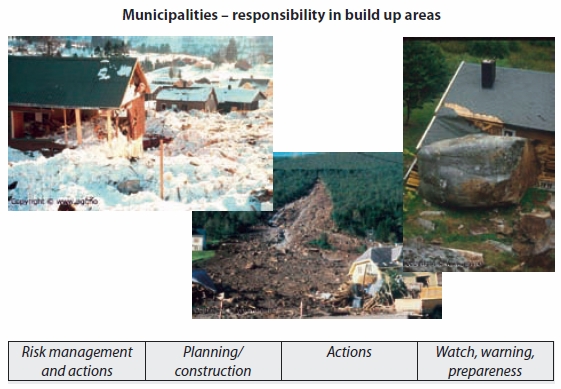
Figure 30: Risk Management under Norwegian City Management Responsibility.
(Source: Strande, 2009)
Applying spatial information can help to solve problems in cities. For example, Lagos Metropolis has emerged as one of the fastest urbanizing cities in the West African Subregion. In the absence of a regular use of information management systems, limited effort had been made to keep track of change in the rapidly growing city for policy making in land administration. The ubiquitous energy radiated by the rapid urbanisation rate in the area not only created unprecedented consequences by diminishing the quality of the environment but it raises serous implications for land management in the region. The factors fuelling the land crisis in the area consists of socio-economic, ecological and policy elements. To tackle these issues in a megacity, up-to-date knowledge would be required to capture and analyse land information in order to control the city’s expansion as well as infrastructure development and make well-motivated choices in planning and (spatial) designs (Osei et al, 2006).
City governments are entrusted with the stewardship of land to ensure that it is equitably exploited amongst a diverse set of users without compromising the ability of future generations to meet their own needs for land. Decisions to support the sustainable development of this land, as a valuable and finite resource, merit an holistic approach to impact assessment. Many aspects and options need to be explored to arrive at an appropriate, objective decision. This can only be achieved if the decision makers, both city officials and citizens, have access to consistent and integrated information about land. A key element in providing this relevant land information is City-wide Land Information Management (LIM), the institutional and technical arrangements whereby information about all land and real property within a city are administered.
Cities currently manage considerable collections of land related information. However, the traditional separation of this information into different component themes (Figure 31), combined with disjoint information management regimes, leads to a considerable loss in the value of the information as a resource. A city-wide SDI provides the means to technically and institutionally integrate these component themes of land information into a truly corporate information resource. The figure below illustrates how an SDI approach can add value by combining information concerning use, condition, value and tenure of land and disseminating this to the decision makers.

Figure 31: City-wide approach to supporting sustainable development
decision-making. (Source: FIG Publication No. 31
Land Information Management for Sustainable Development of Cities: Best Practice
Guidelines in City-wide Land Information Management, 2002)
The Marrakech Declaration (FIG Publication No. 33) recommends the development of a comprehensive national land policy, which should include:
This should in turn, form the basis for sound administration at local level. While the focus has been on land administration, management of a city includes other factors, such as public safety. So, while an SDI should provide the basis for a good land administration system, it must also serve a range of city management processes not necessarily dependent on use of land. For example, the availability of a sound cadastral database covering spatial, legal and valuation systems is a key element of an SDI; other data sets not necessarily based on cadastral parcel are just as valid. Datasets can include census districts, administrative units defining communities and government agency services, road and utility service networks and natural feature boundaries.
There are a number of key issues faced by the growth of cities, which places severe strains on their management. Key issues that need to be addressed and possible use of spatial information are shown in table 6.
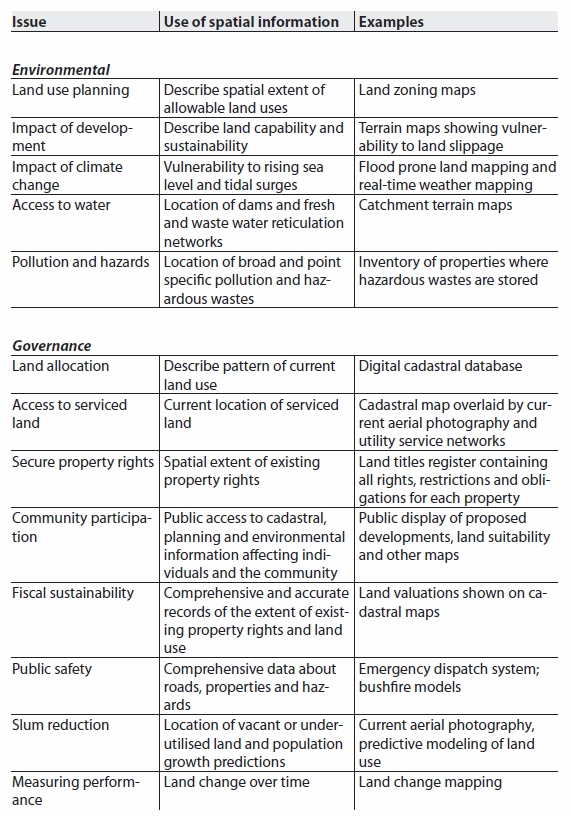
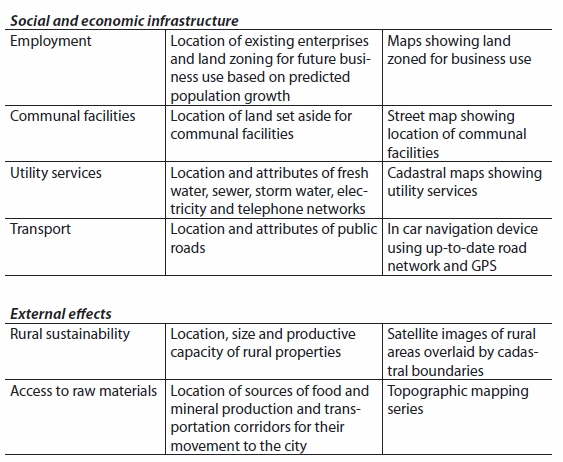
Table 6: Examples of use of spatial data and products in city
administration. (Source: Kelly, 2007).
An SDI is more than a collection of spatial data sets. It is also more than a land administration system. SDI forms an underlayer of policies, administrative arrangements and access mechanisms to allow integration of data from various providers, systems and services to support end-to-end processes across organizational and technology boundaries within a defined jurisdiction.
Some trends in SDI development include:
Public use is growing through navigation and online services. While individual city governments are developing their SDI, experience shows that they are more effective if they:
In fact, city level SDI should look like a microcosm of regional and national SDI, perhaps differentiated by use of higher resolution data. City SDI should be able to fit within SDI at other levels of government, using the same standards, protocols and possibly access mechanisms. In turn, SDI at higher levels should be able to seamlessly access and use the higher resolution data and capabilities of city level SDI. Only in this way can duplication of effort between levels of administration be avoided and seamless services provided to the primary users – city managers and citizens.
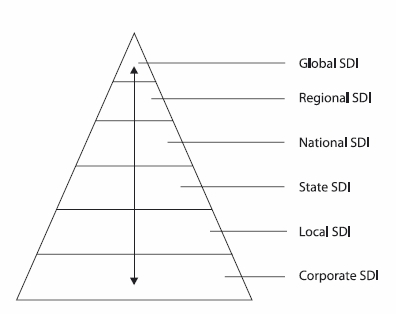
Figure 32: An SDI Hierarchy. (Source: Williamson, 2006)
Some key tools needed to address megacity problems were identified by the study.
These included:
It should be noted that the needs of cities in the developed and developing world are significantly different.
Correspondents identified some immediate requirements to support creation or further growth of SDI in their cities. They have differing priorities and some have already solved these problems. Those reported include:
Experience in countries such as Australia shows that problems encountered in developing an SDI at any level include:
A detailed set of SDI procedures and strategies can be found in the SDI Cookbook at http://www.gsdi.org/docs2004/Cookbook/cookbookV2.0.pdf sponsored by the Global Spatial Data Infrastructure Association (GSDI).
There are many good examples around the world of how spatial information and technology are being used to improve planning and management of large cities. The Ile de France region has offered the following case study as an example.
The future development of the Ile de France region has recently been a source of both intense work and political turmoil… Ile de France is the region centred on the city of Paris. Its main characteristics are: 12 million inhabitants (about 20% of France’s total population), 1,280 communes, 12,000 km² (about 2% of the French territory); it combines both urban and rural activities, since 80% of its area is dedicated to natural or agricultural use.
The spatial planning of this region has been done so far by the State, who considered that this region was of national interest, therefore of its direct responsibility. But France has been involved for the last twenty years in a process of decentralization and empowerment of local authorities. In this framework, the Ile de France region considered in 2004 that it should review the last master plan set up by the State in 1994. It believed that this master plan was outdated, particularly with regards to environmental challenges.
The process of setting up a new master plan started both as a political process with a large consultation of stakeholders (city councils, departmental councils, government, civil society, economic circles, and population), and as a technical process. The region has entrusted its planning agency to draft master plans, which reflected the outcome of the consultation process, and were used for discussion purposes, until the regional council adopted the last version in September 2008.
Concerning the main guidelines of this master plan, the region has highlighted three main challenges until the year 2030:
The master plan was criticised by the government as being insufficiently ambitious and therefore, it did not get the required approval, nor was it enforced. However, the master plan remains a very useful source of information and an exciting example of a comprehensive approach of these regional problems, assessed in the spirit of SDI. Below are some maps illustrating the outcome of this work. (Source: Paris master plan project 2008; French acronym: SDRIF.)
Figure 33 shows the spots where additional housing should be undertaken, with not less than 30% of social housing.
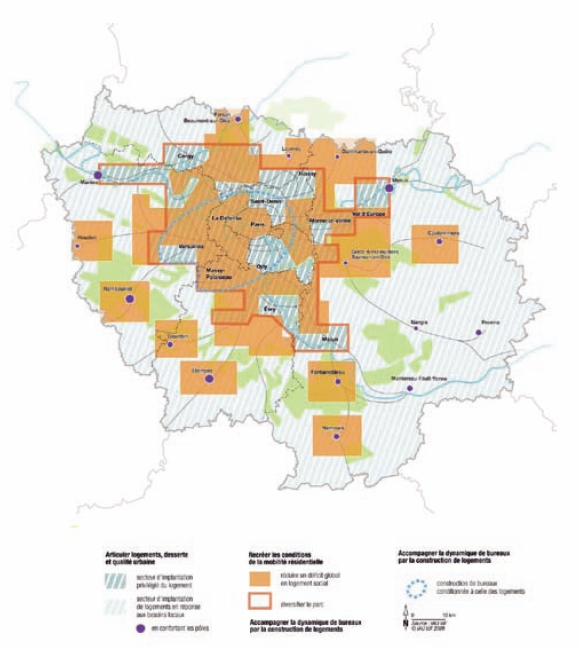
Figure 33: The Greater Paris master plan project – housing. (Source: SDRIF,
2008)
All these maps have been produced by the engineering and urban planning institute set up by the region, under the name of “Institut d’Aménagement et d’Urbanisme – Ile de France” (IAU-IdF): This agency has a total staff of about 200 persons, in a number of disciplines, and it provides information and guidance to the political bodies involved in the planning of the region.
The agency describes its scope of activities as follows:
In order to provide appropriate data and reports, it has a multidisciplinary know-how which illustrates its comprehensive approach of planning challenges, linked to geographic information, in the spirit of SDI. Its contents include:
Such a multidisciplinary approach linked to a geographic based approach, with a guaranteed sustainability, fits well with the spirit of an SDI at regional level, which provide probably the most advanced level of SDI in France.
Figure 34 shows the transportation priorities at regional level. A clear priority should be given to public transportation at the expense of the individual car for evident environmental reasons. Development of regional railway lines, favouring lateral ways of transportation thus avoiding the Paris centre are among the most prominent recommendations. Figure 35 presents all stations in service and planned for the purpose of water sanitation.
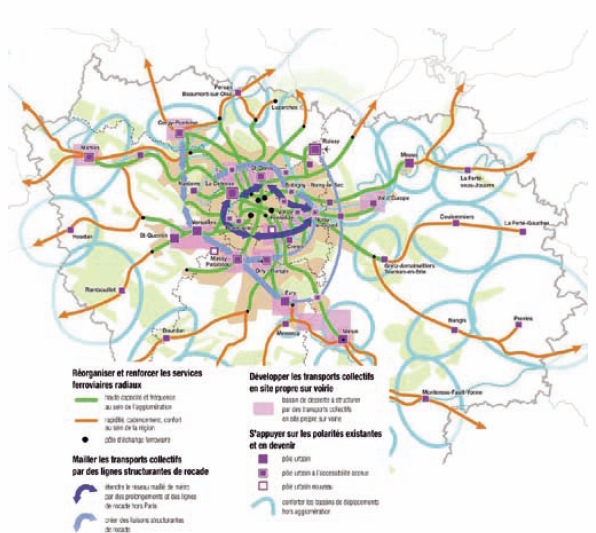
Figure 34: The greater Paris master plan project – transportation. (Source:
SDRIF, 2008)
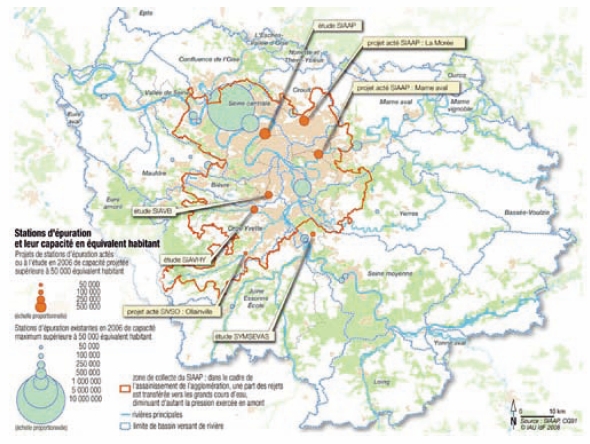
Figure 35: The greater Paris master plan project – water sanitation.
(Source: SDRIF, 2008)
Figure 36 shows regional policies. Densification of the urban areas is a major target, with additional urbanisation allowed mainly along the railway lines.
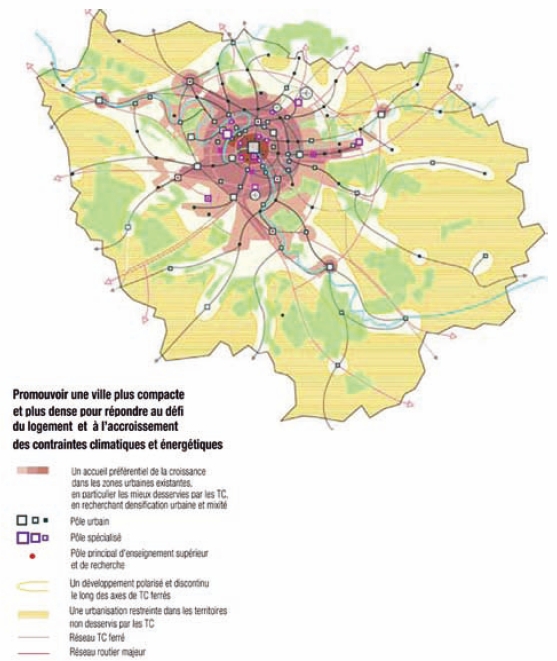
Figure 36: The greater Paris master plan project – regional policies.
(Source: SDRIF, 2008)
In Figure 37, strategic geography identifies the areas whose dynamism is fundamental to the region, and those areas with a potential role in the regional dynamics, provided that appropriate investments are done.
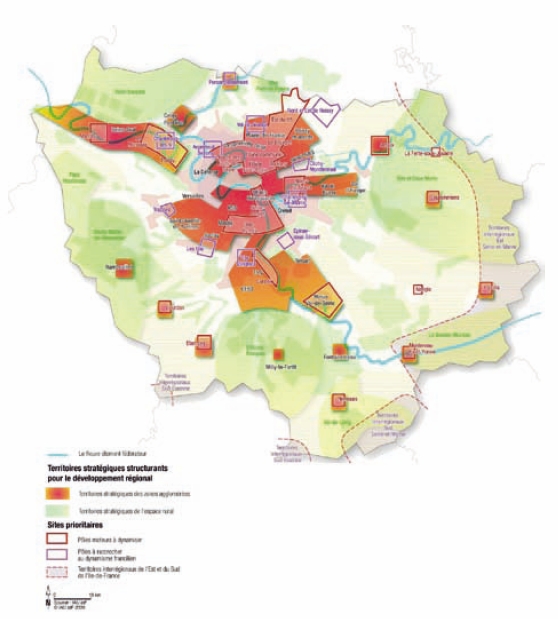
Figure 37: The greater Paris master plan project – regional dynamics.
(Source: SDRIF, 2008)
Data collection & maintenance – high resolution satellite imagery (< 0.5m) is now commercially available at an affordable rate from a number of sources with repeat coverage at a frequency greater than required for this application. This opens up the possibility to efficiently generate topographic and thematic mapping (at a scale of at least 1:5,000) and to better understand changes across the city, e.g. sporadic creation of informal settlements. This process is being made more effective with emerging automatic feature extraction techniques. Other tools including digital aerial photography, LiDAR, low cost GNSS devices on smart phones and automated field surveying are revolutionising how spatial information can be quickly captured.
Data integration and access – ISO / OGC / WWW interoperable information and services standards allow the possibility of the real-time merging of data and services (plug and play) from a variety of sources in the city. This will be achieved through the creation of shared web information services to allow users access to the wide range of information held by different agencies of the city. This will be instrumental in breaking down the information silos and will lead to the innovative re-use of spatial information.
Data analysis – data mining and knowledge discovery techniques allow the integration of a wide range of spatial information and associated attribute information. These create an opportunity to perform more effective forms of analysis in decision-making and leads to more cost-effective solutions, e.g. targeting of limited city resources for health care and maximising the economic benefits of investments in transportation systems.
3-D city modelling – many applications are enhanced by the use of 3-D spatial information, e.g. visualisation of planning development proposals, flooding predictions, modelling population growth, tourist visit simulations and the design of transportation networks. 3-D spatial information of the natural and built environments are increasingly available, e.g. through terrestrial LiDAR, making many of these applications operationally viable.
Citizen centric urban sensing – The new generation of urban sensors, including cellular phones, has potential for providing managers with access to a range of current spatial and environmental information about the evolving activities of their megacities. By these means people could voluntarily provide information about changes to their environment. This has the potential to increase the levels of citizen participation in the governance of megacities and to help to fill the current gaps in urban information needed to understand the dynamics of megacities. At the national level, no country has so far generated data management policies that truly integrate and utilise this new approach. Citizen participation in data collection must be voluntary and data collection methods must be transparent and open to public understanding
1. Widen the awareness of rapid urbanisation with land professionals, and FIG members in particular, to better achieve solutions.
Rapid urbanisation is a global issue that is presenting the greatest test for land professionals in the application of land governance to support and achieve the MDGs and to mitigate the negative social, economic and environment consequences of this development. An awareness programme for land professionals, especially FIG members, is required to ensure that land professionals can respond to and help resolve issues such as climate change, food shortage, energy scarcity, environmental pollution, infrastructure chaos and extreme poverty increasingly prevalent in urbanisation.
2. Present the benefits of SDI to megacity management to accelerate their implementation.
Investment in the use of spatial information and the development of megacity SDI will only occur if there are good practice examples. Further research is required to gather evidence on the range of benefits to justify these investments. This evidence should then be shared to allow megacities to strengthen their action plans for investment. Opportunities provided by spatial information and SDI’s should be exposed to all stakeholders, especially civil society, to organize users for common demand.
3. Include spatial information best practice in the agenda of relevant international bodies to promote the benefits of SDI.
Several global organisations support the agendas of the megacities; such as UN-Habitat, leading bodies in the spatial professions and urban-focussed forums like Metropolis. FIG should work in partnership with these key organisations to ensure that the role and benefits of use of spatial information and development of SDI is understood within the megacities communities to encourage their adoption and exploitation.
4. Highlight the value of spatial information tools to megacity professionals to encourage their adoption.
The study has found that spatial information technology is being recognised widely as one of the tools needed to address pressing urban problems, but there is still a general lack of knowledge amongst communities of practice about how spatial information solutions can be applied. Knowledge transfer, especially amongst practitioners in city administrations, is a key requirement. A sharing of case studies to demonstrate current best practice in selected cities is a way to show other cities what is possible.
5. Apply interventions to informal settlements in the context of wider economic and social policies to provide scalable, sustainable solutions.
The solutions for reducing informal settlements in many cities will only be achieved through a range of appropriate interventions being applied within the broader context of economic growth and poverty reduction policies. To achieve solutions around this combined and complementary policy approach it is essential that spatial information be integrated and analysed with wider economic and social information. It is recommended that information strategies and standards are developed to achieve this more holistic approach to information management in megacities.
6. Create a megacity spatial information strategy to guide the development of a megacity SDI.
Spatial information should not be considered a separate information asset to be managed in isolation within megacities. Guidelines on spatial information need to be tightly integrated into the overall ‘corporate’ information strategy and informed by national spatial information interoperability standards. This ‘corporate’ approach will facilitate collaboration and multi-professional solutions to problems. Best practice in information strategies should be shared among megacities.
7. Open access to the megacity SDI to civil society to support participatory democracy.
The creation of megacity SDI and spatially enabled web services can provide citizens with direct access to megacity information and to support a dialogue with the megacity administration. It is recommended that megacities should open these channels to the citizens and provide web based access to information and services, wherever possible, to increase transparency, facilitate business and improve citizen participation to decision-making.
8. Extend the skills of all professionals involved in megacities to enable the increased exploitation of spatial information tools.
Too often the skills surrounding the use of spatial information tools is limited to a small group of what are usually called ‘GIS experts’. This severely limits the understanding and use of these valuable tools across megacity organisations. It is recommended that training programmes on spatial information tools are developed for a wide range of professionals across megacities to create a self-service model.
9. Proactive information to manage complex and dynamic urban environments.
The traditional approaches to the capture and maintenance of spatial information in megacities involve a static view of what layers of spatial information are captured and their quality (often high and expensive). Spatial information is normally maintained on a cyclical basis. In the context of many megacities, this traditional paradigm may be inadequate in the near future. Consequently it may be necessary for these megacities to develop and adopt a complementary spatial information management strategy that in the short term will apply additional spatial information tools, techniques and policies to more effectively monitor and model growth and change in the urban area to improve city governance. The outputs must be achieved within shorter timeframes than in the traditional approaches and be much more supportive of the most immediate information needs and priorities of each megacity.
Copyright © International Federation of Surveyors
All rights reserved
The International Federation of Surveyors (FIG)
Kalvebod Brygge 31–33, DK-1780 Copenhagen V
DENMARK
Tel. +45 38 86 10 81
Fax +45 38 86 02 52
E-mail: FIG@FIG.net
www.fig.net
Published in English
Copenhagen, Denmark
ISBN 978-87-90907-78-5
Published by
The International Federation of Surveyors (FIG)
January 2010
ACKNOWLEDGEMENTS
Editor: Chryssy Potsiou
Cover photos © Stig Enemark
Design and layout: International Federation of Surveyors, FIG
Printer: Oriveden Kirjapaino, Finland
Rapid Urbanization and Mega Cities:
The Need for Spatial Information Management
Research study by FIG Commission 3
Published in English
Published by The International Federation of Surveyors (FIG), March 2010
Copenhagen, Denmark
ISBN: 978-87-90907-83-9
Printed copies can be ordered from:
FIG Office, Kalvebod Brygge 31-33, DK-1780 Copenhagen V, DENMARK,
Tel: + 45 38 86 10 81, E-mail:
FIG@fig.net